This year, the American Musical Instrument Society (AMIS) held their annual meeting in Bethlehem, PA at the Moravian College and nearby environs. I hadn’t been anywhere in Pennsylvania since a child, so was glad for a chance to explore. My wife Jaci stayed home this trip, so I did less vacationing and more AMISing this time around.
Rather than make this a digestible continuing series, I’m reporting on the entire week-plus trip in one marathon blog with tons of photos (click to enlarge any that interest you). Feel free to bookmark and peruse at your leisure (you have until next May when AMIS meets in South Carolina)!
First were a few days in the Chicago area to visit my family. The entire clan lives there, and all but one came over (to my sister’s) the night of my arrival for pizza and Pictionary, love and laughs. We’re a fun bunch. That weekend was the Royal Wedding, so they taped it for another evening’s entertainment. Meanwhile, Jaci and Maezi celebrated the event at home as only they could. http://twolittledogs.com/blog/
Mom, sister Kris and niece Sarah spent a morning at a nearby Farmer’s Market.
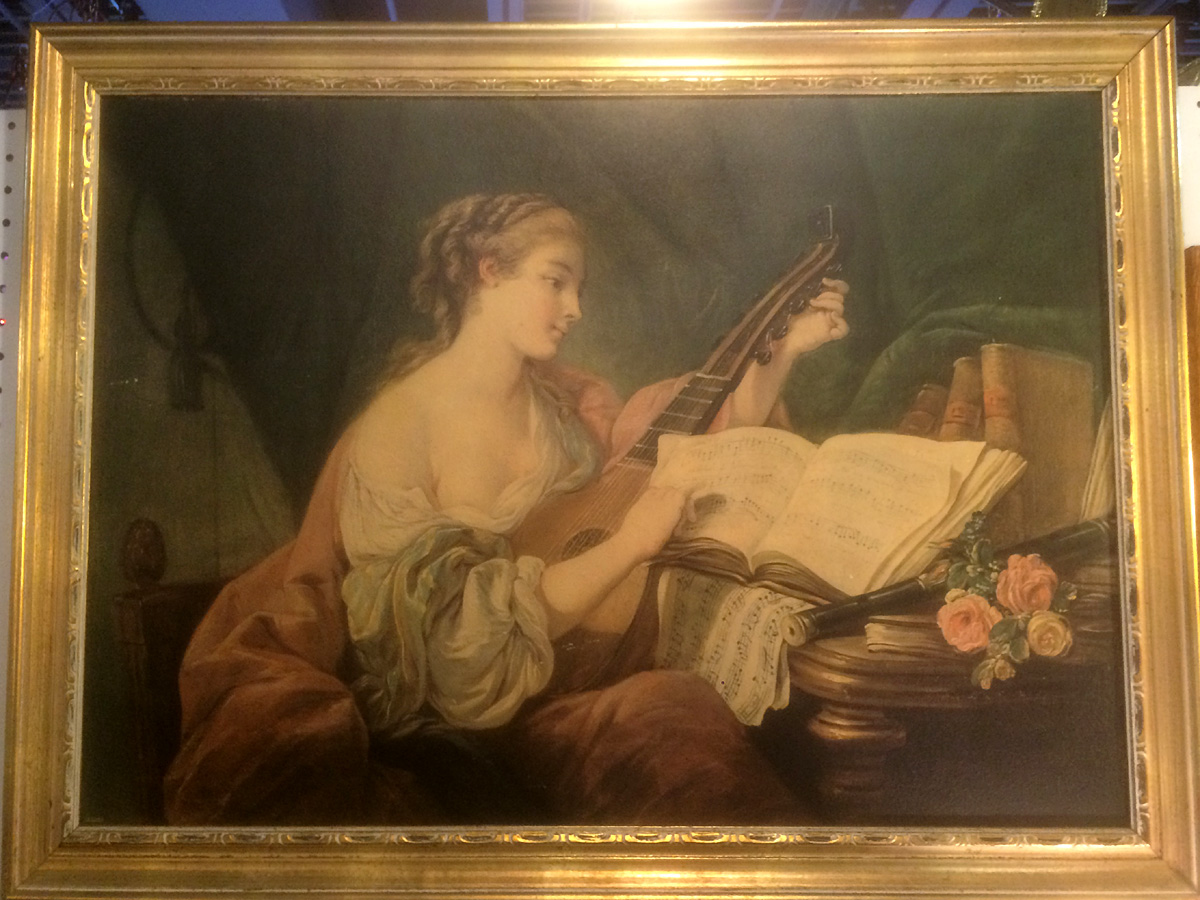
Various family members took me to the best antiquing spots (painting from 1919 – didn’t have room for it).
Brother Mark took Dad and me to a funky old recycled music and equipment shop. Looking through a rack of old 70s & 80s guitar mags, I discovered a couple original Mugwumps magazines published by the late, great Michael Holmes. What’re the odds of finding his harp guitar issue?! (I’ll scan and post it shortly)
My folks turn 91 this summer. I sure cherish them.
___
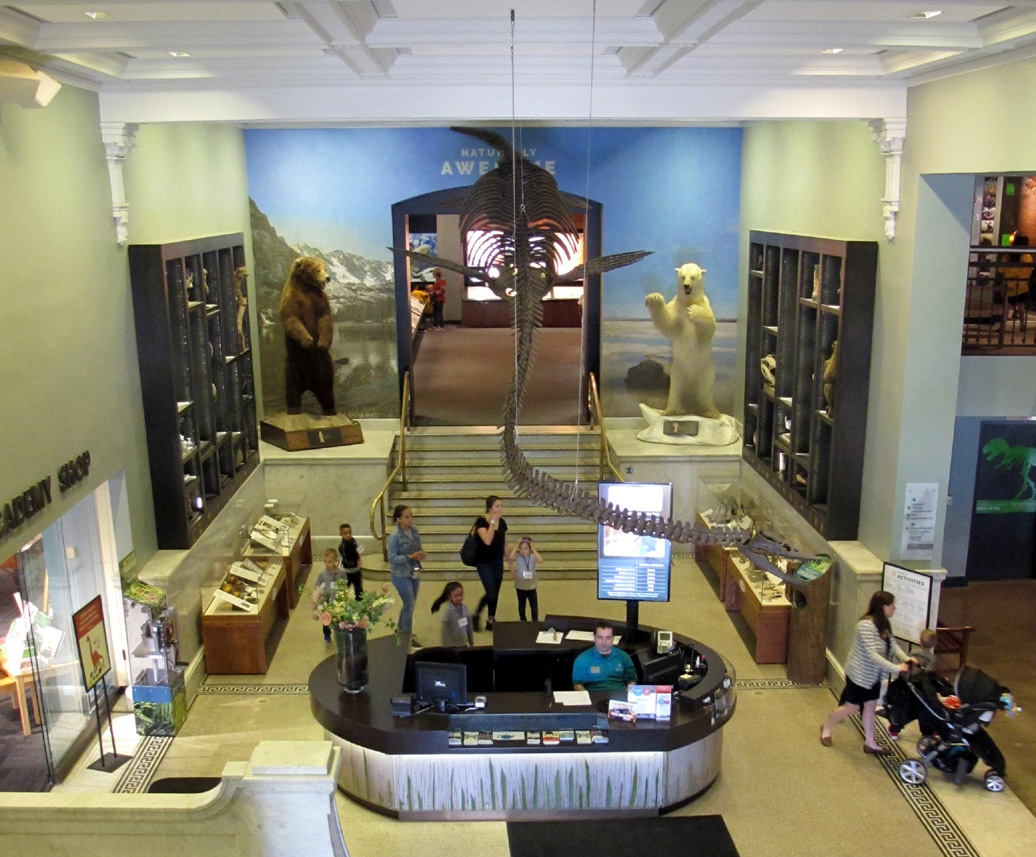
I booked 1 free day (and Airbnb sleepover) in Philadelphia before heading up to the conference. Wasn’t sure what all I could fit in but wanted to see Fred Oster’s Vintage Instruments shop. Driving in Philly was rather slow and tedious (and this from a guy from L.A.). I first crawled past Independence Hall, then seriously overpaid for parking at the Academy of Natural Sciences of Drexel University (America’s oldest museum, I believe). The prize here was a fantastic live butterfly exhibit.
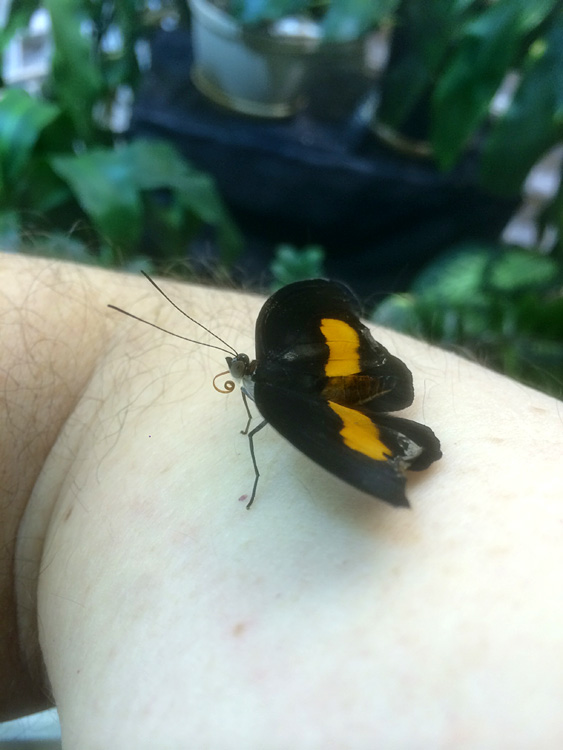
One immediately landed on my sweaty arm.
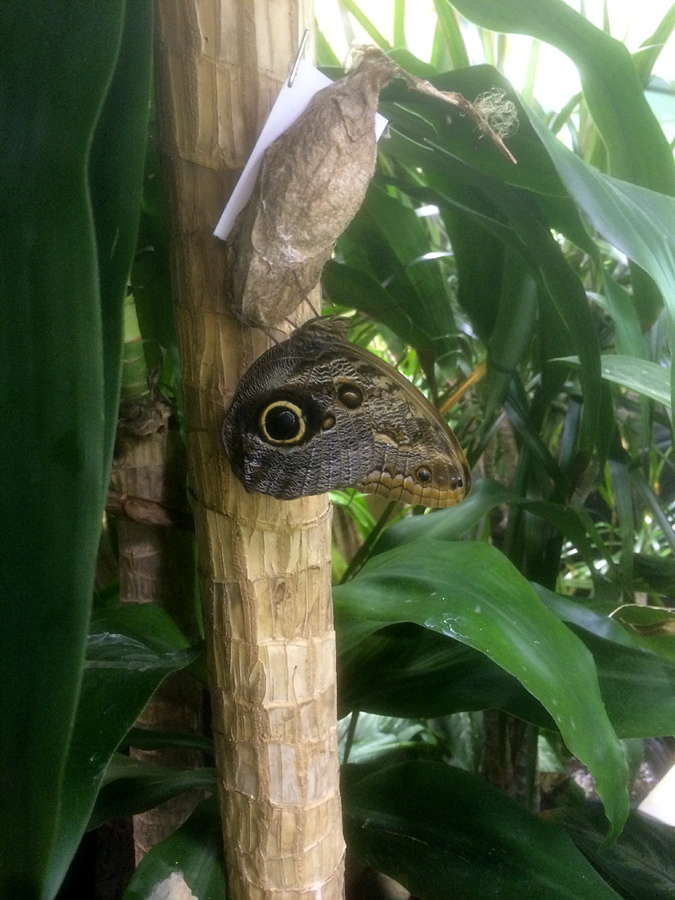
Owl butterfly (Caligo sp.), showing half its predator-scaring “face.”
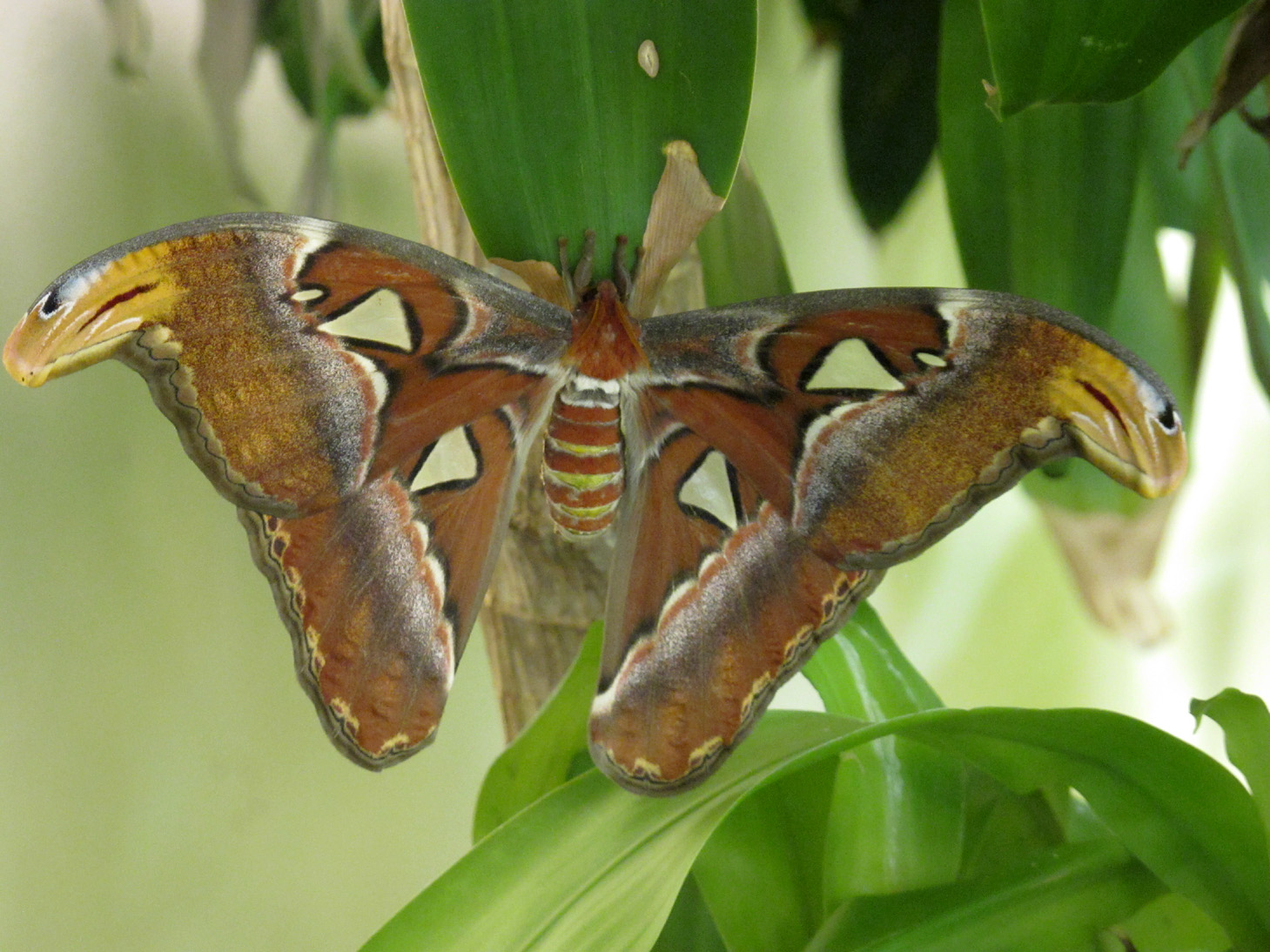
Beautiful huge Atlas silk moths by the dozens.
The cocoons come from breeders. Upon emerging (these had just the night before), they hang out to open and dry their wings. The staff simple carry them out still perched and attach the empty husks to plants. They’ve got just a week or two of life now, not to eat (most silk moths have no mouths) but to mate. The females rarely even move, they just wait for the males to come to them.
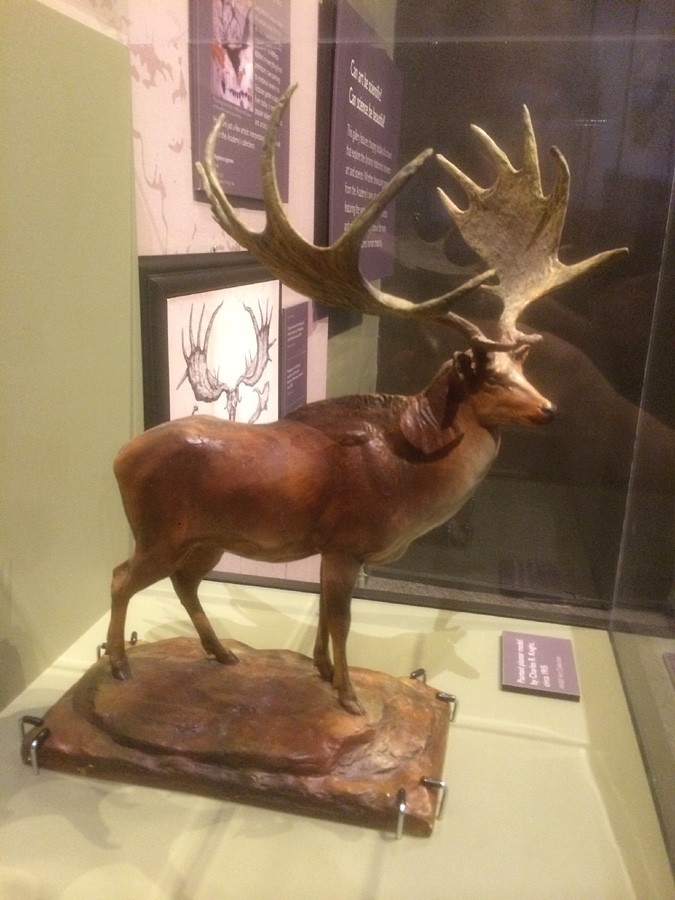
A beautiful vintage sculpture of an extinct Irish elk by the great Charles Knight.
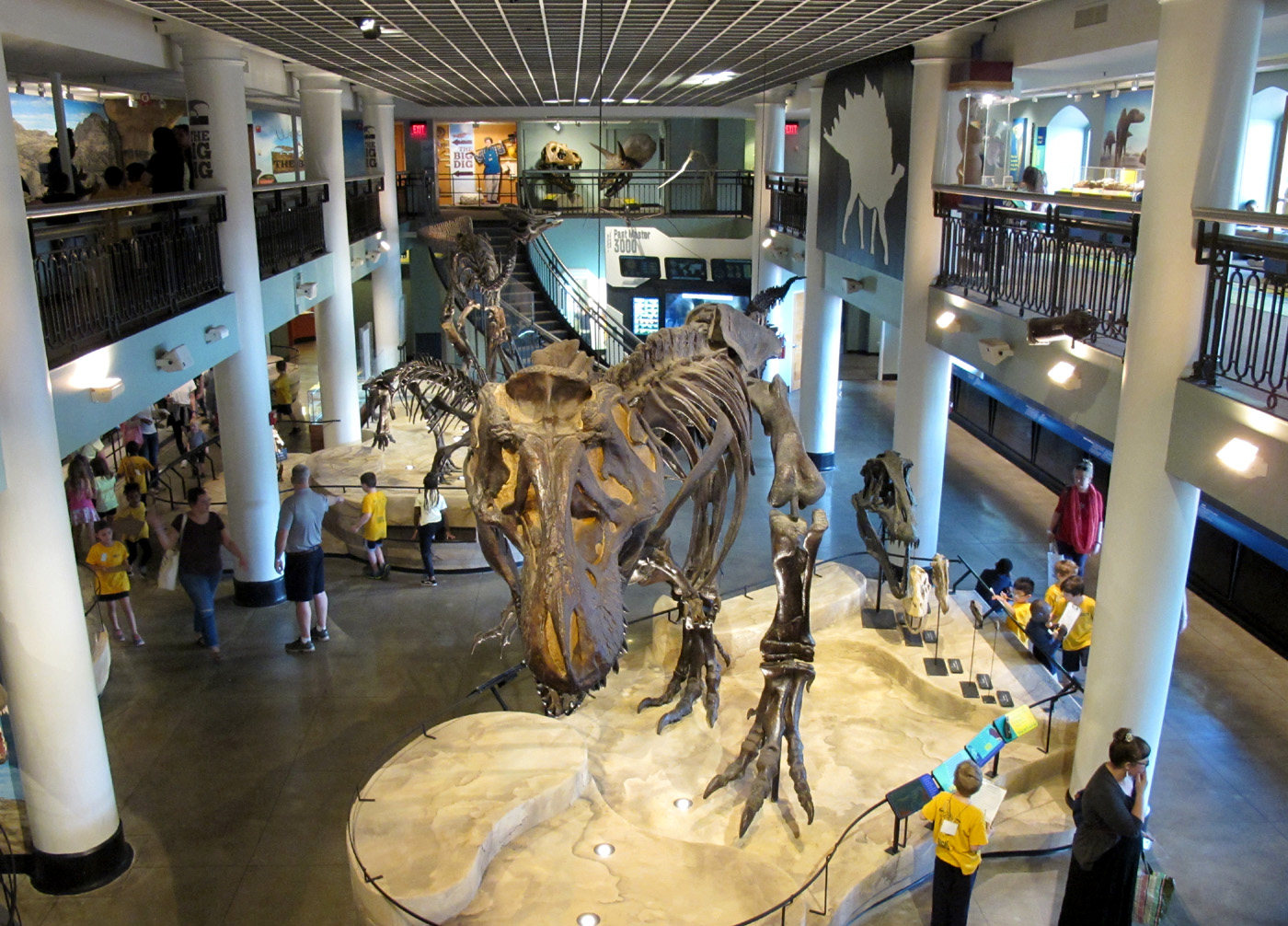
Dinosaur hall.
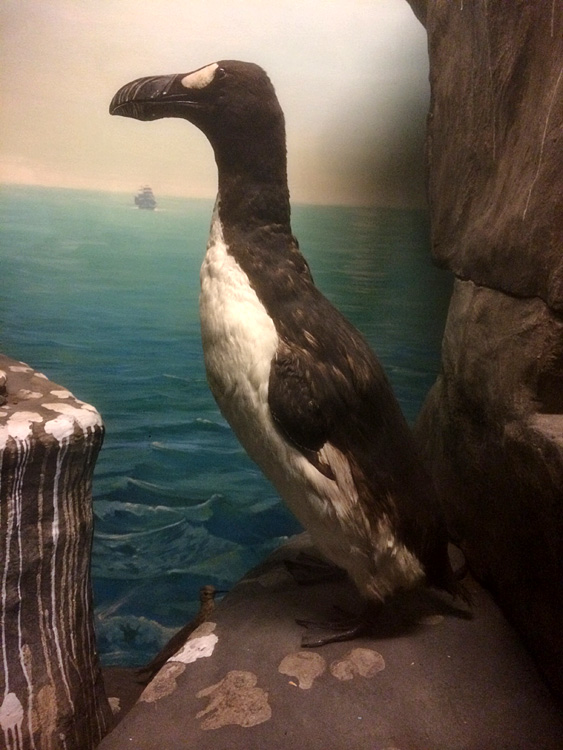
It’s one thing to see extinct dinosaur bones. Extinct modern animals, like the giant auk, cause a different feeling.
___
Next stop: Vintage Instruments and a visit with Fred Oster.

I would’ve loved to spend hours there, absorbing the atmosphere of his incredible refurbished vintage brownstone. Photos were discouraged, but I got to see a few things, including two “as is” Knutsen’s and some nice early Gibsons.
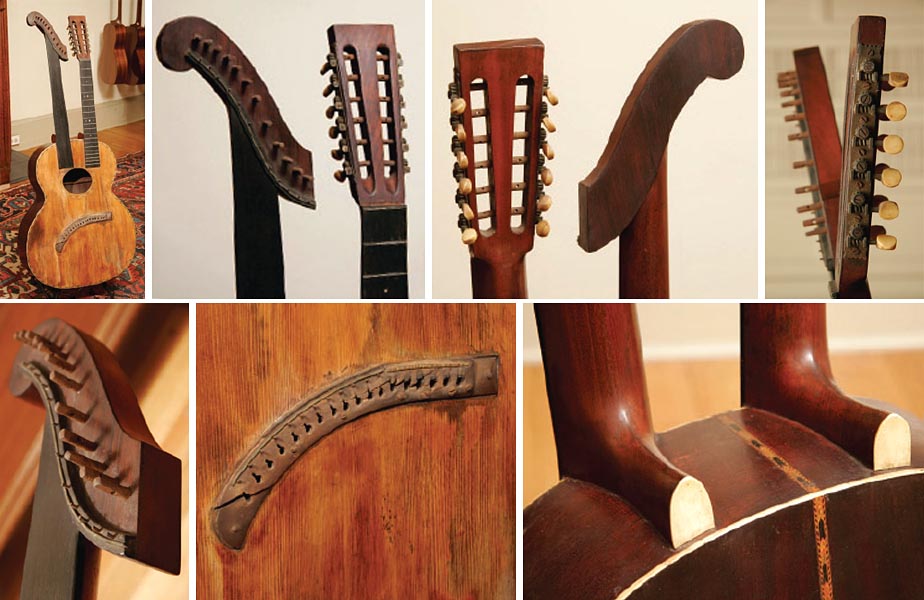
I also saw and measured the amazing (though in poor shape) c.1900s Holzapfel & Beitel harp guitar. Another one that may have been inspired by Bohmann’s giant 1890s contra-bass HGs, the Baltimore duo seem to have been intent on one-upping him. Their 25” scale 12-strings-on-the-neck with 12-subs creation was even bigger, with a body 19-1/2” wide, 24-1/4” long and 6-1/8” deep!
Someone (not me) needs to rescue and resurrect this historical treasure.
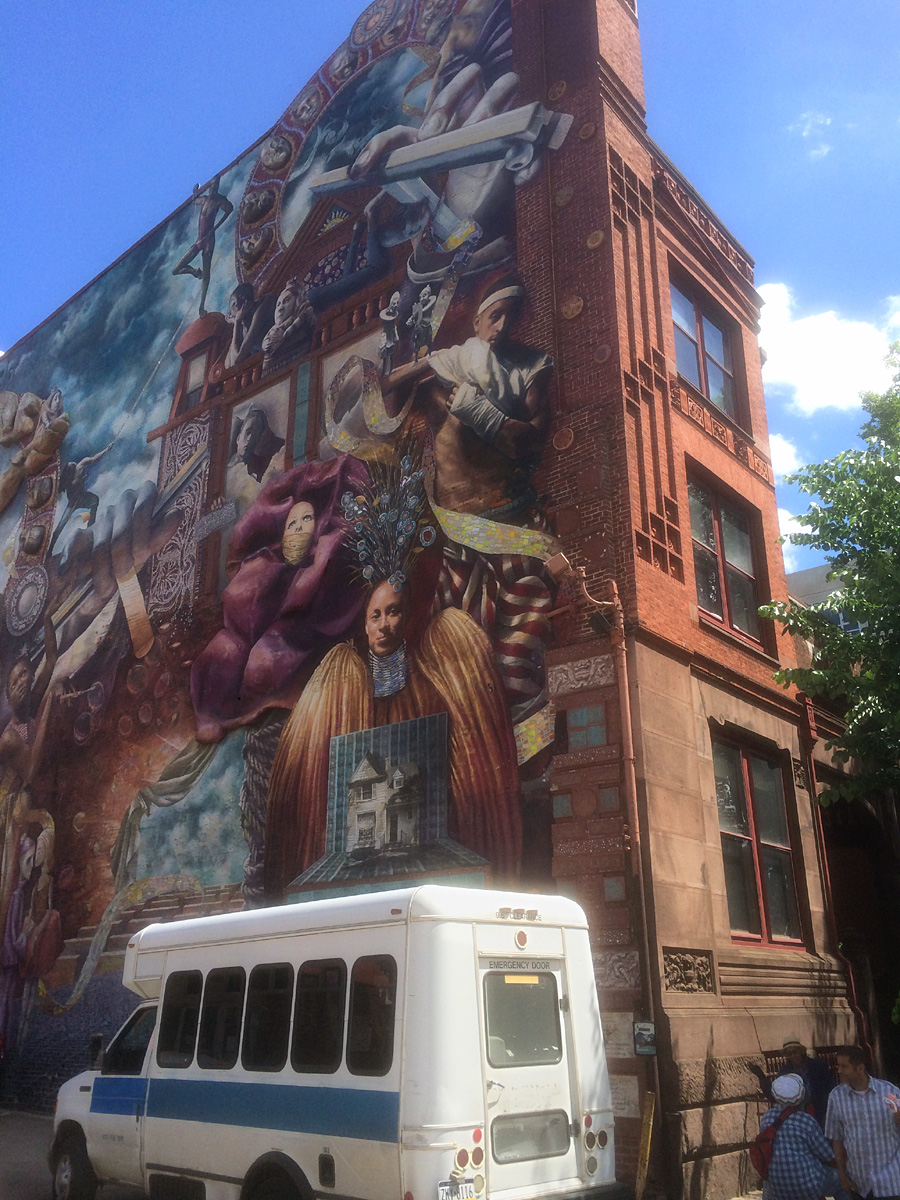
The outside of Fred’s building is part of the city’s Mural Arts Project. It’s actually 3-dimensional with parts of the figures sculpted out from the flat wall.
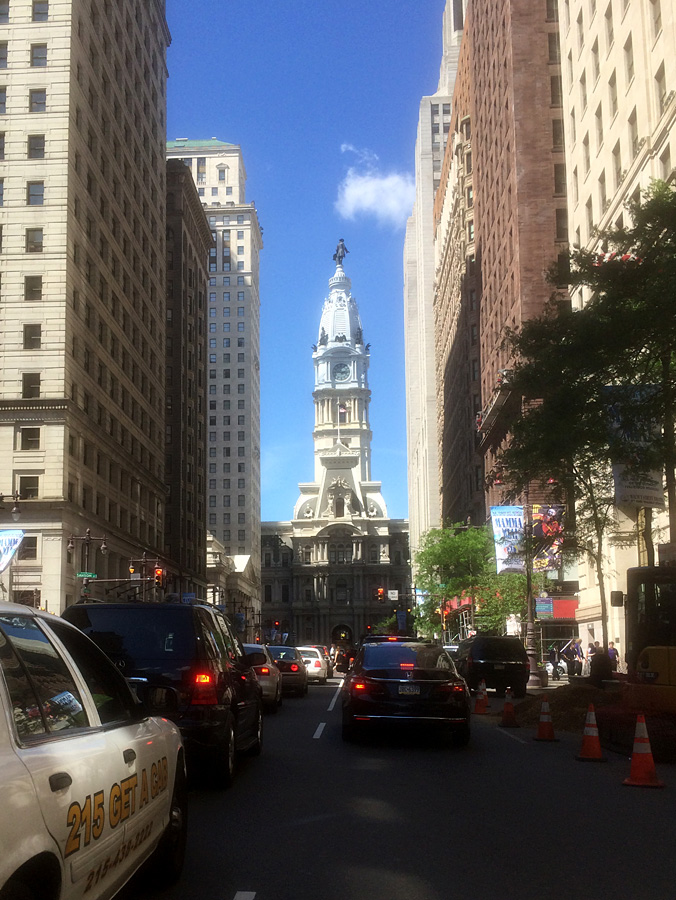
Getting out of Philly took a couple hours.
I just made it to the AMIS Board of Governor’s dinner and meeting (I’m now on the Board, below).

___
The parade of papers started immediately the next morning. Note the lovely stained-glass windows that serve as a backdrop on the stage. Some plucked strings highlights included:
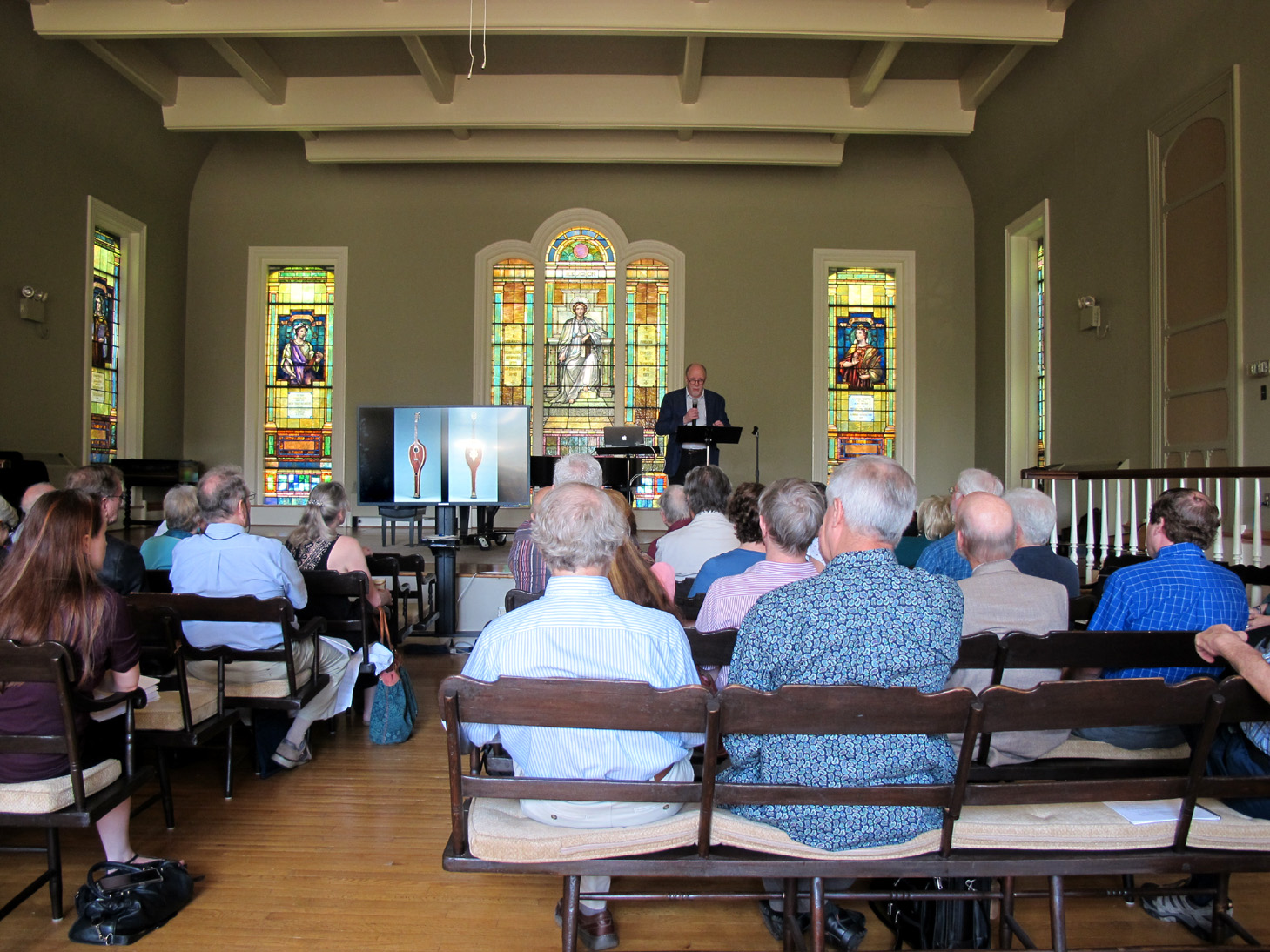
Darcy Kuronen (of the BMFA) apologized for the hundredth time for still not finishing his Scherr harp guitar article (while acknowledging that I’m probably the only one who cares). He spoke of Scherr’s pianos instead.
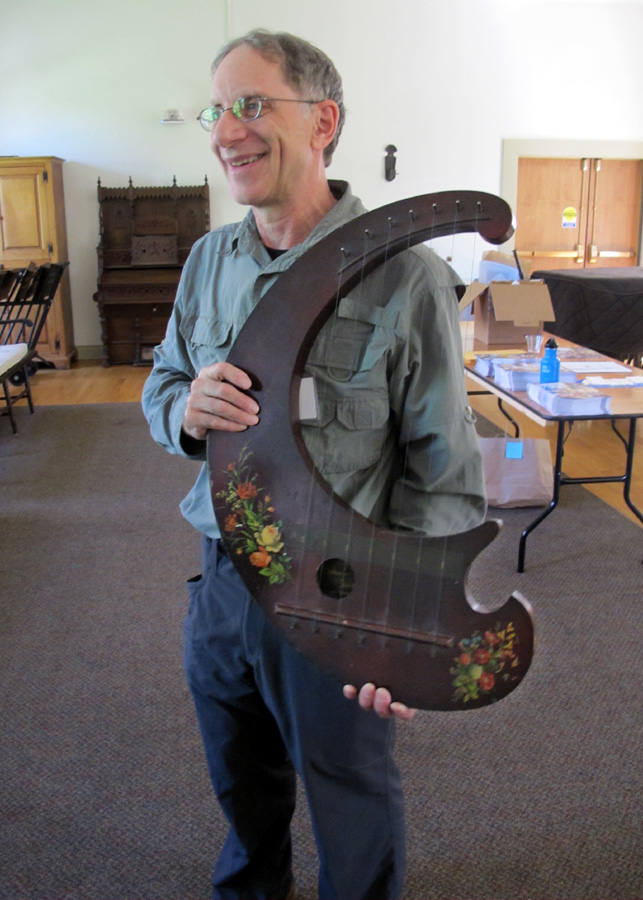
Rick Meyers, the new fretless zither scholar (there’s just Rick and me now) discussing the fascinating Odd Fellows “Self-Playing Harps for David.” Most have non-functional strings; instead one simply turned on the internal music box (the symbolism of the many wacky “harp” bodies was the point).
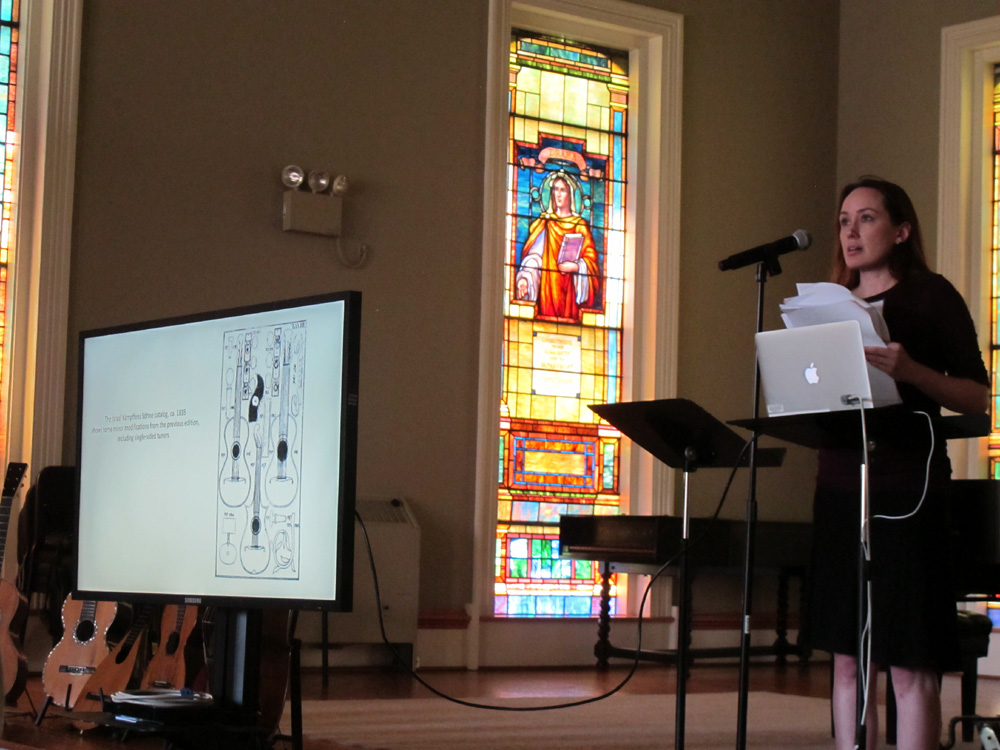
Arian Sheets from Vermillion’s National Music Museum talked about guitar production in the Vogtland region and how C. F. Martin fit into that.
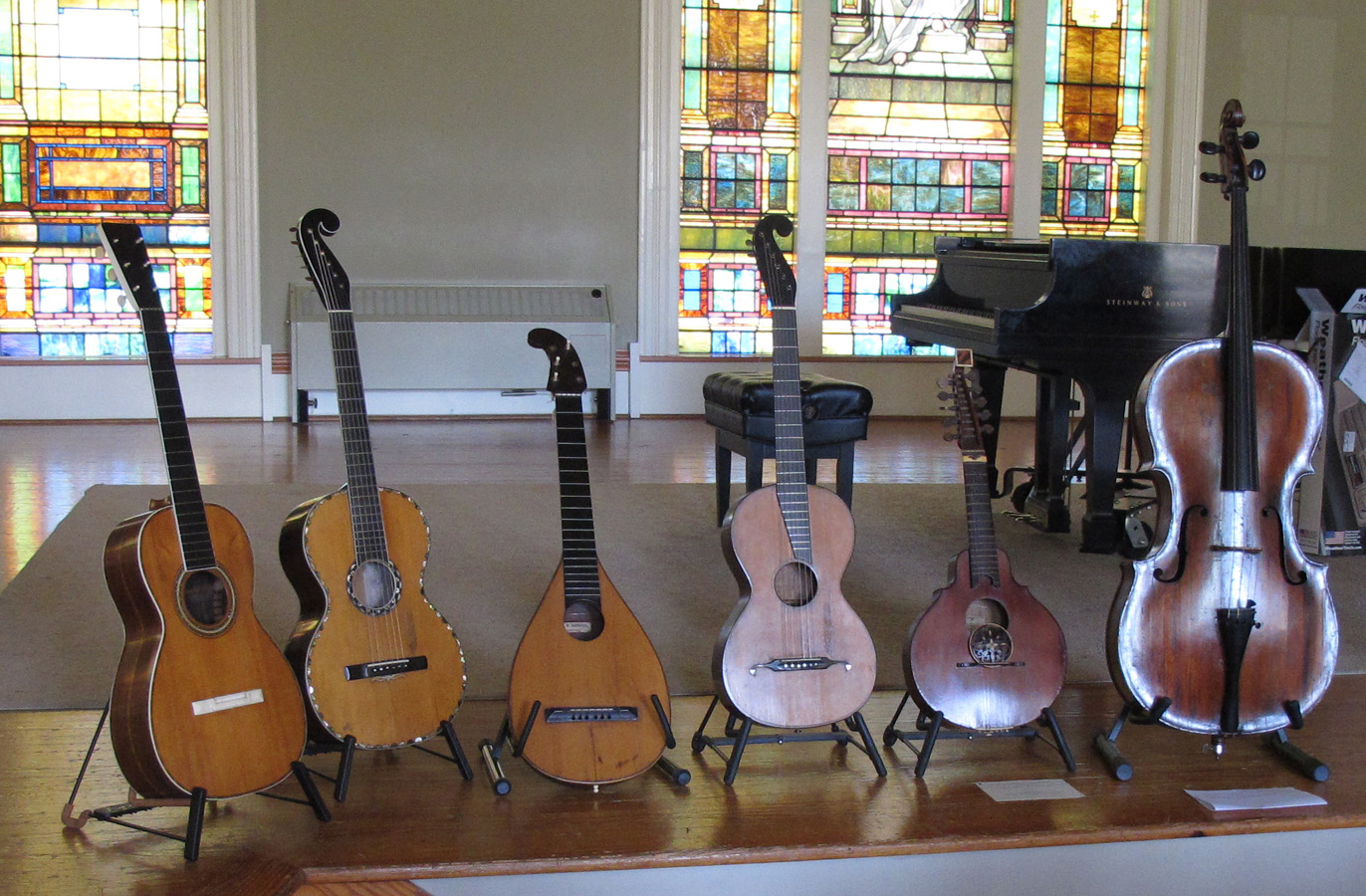
She had a wonderful display of Martin and other period instruments, hand-delivered by owner Fred Oster. That cittern-like guittar is by Peter Young (1788 or 1798, can’t read my notes) – believed to be the oldest plucked string made in America.

Lynn Wheelwright, our finest early electric guitar expert gave his first paper on Martin’s (lack of) electric guitar efforts.
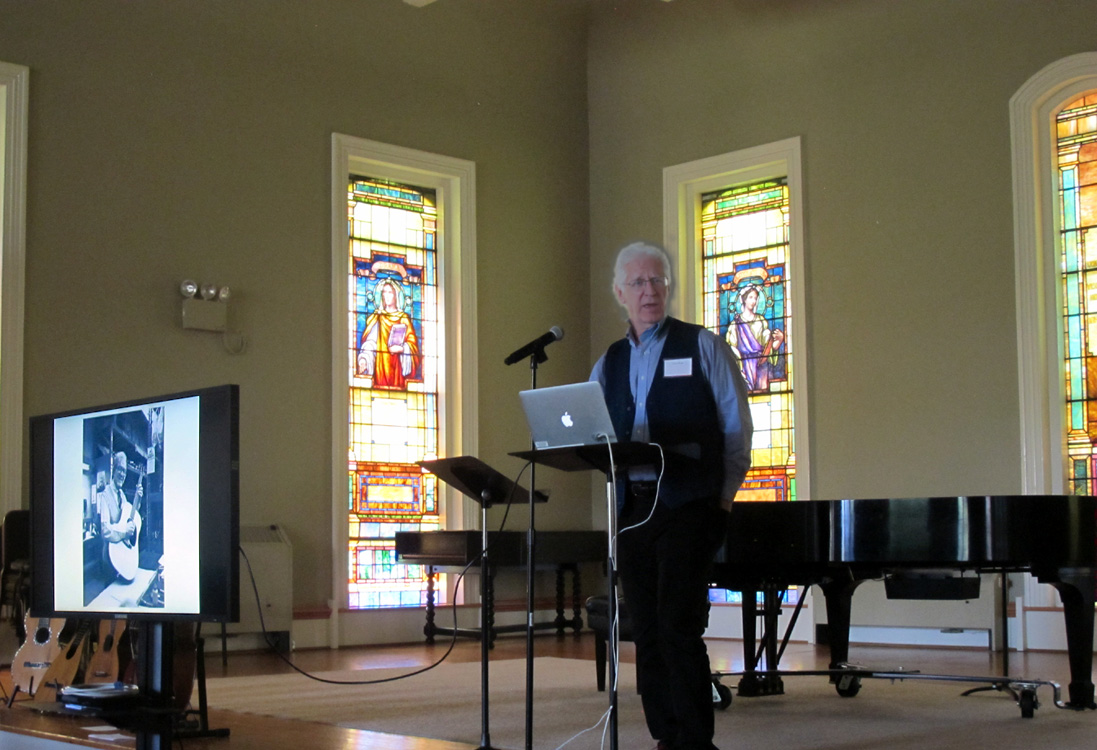
Dick Boak, now officially retired from the Martin Company, gave an overview of the Martin archived and museum (that we would visit shortly).
___
Our first group field trip was to the Moravian Historical Society, a short bus ride away to Nazareth. Housed in an original 1740-1743 common house on the oldest existing Moravian site in America, they have a few original 1700s locally-built instruments on display (including these very early keyboards) and brought out the rest for us.
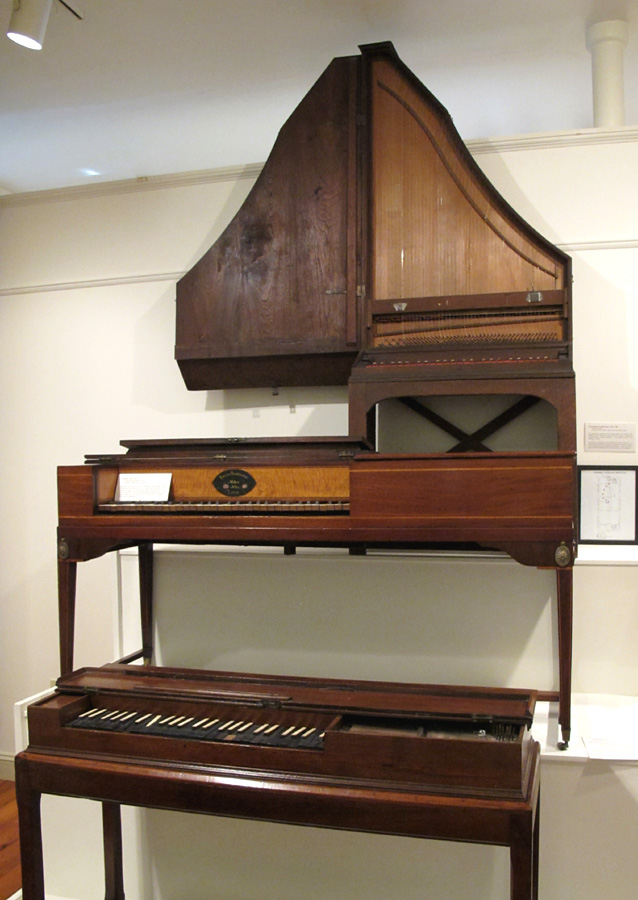

Unlabeled mystery guitar; below: violin, serpent covered with tooled leather.

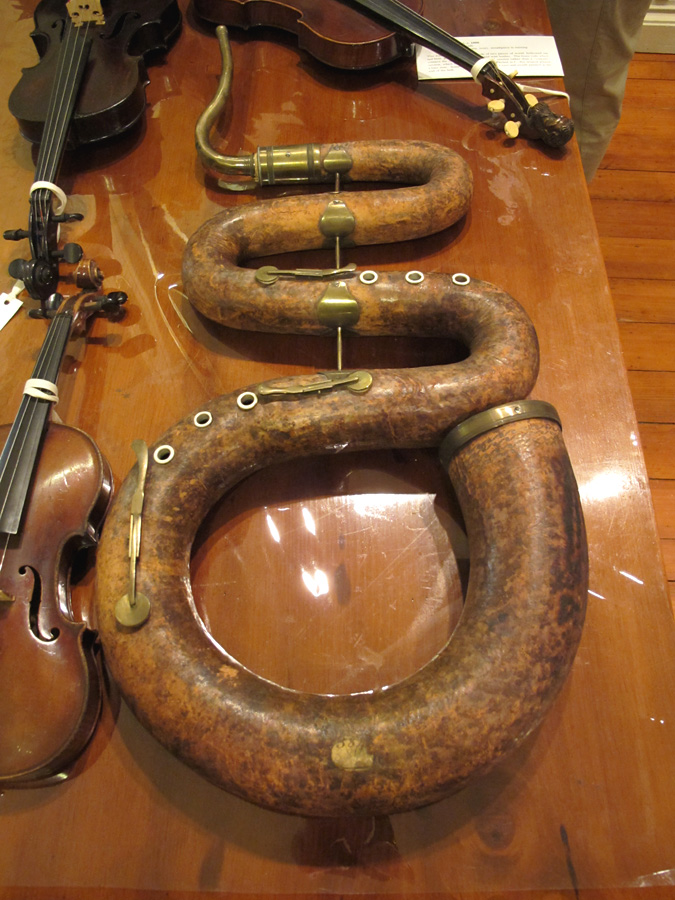
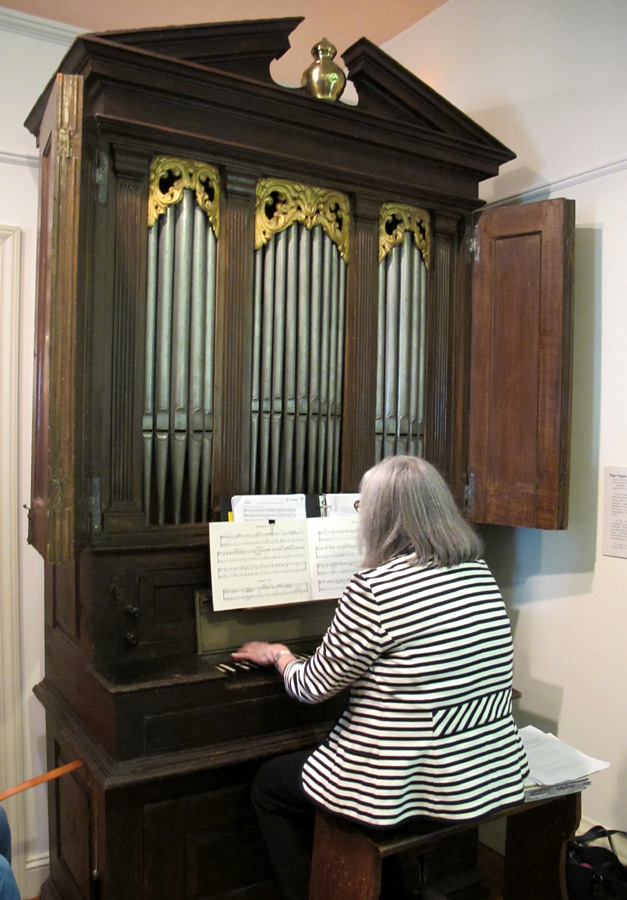
An original 1776 Tannenberg pipe organ, in performance condition.
I was actually most enamored of the authentic, surviving pre-1775 tile stove “radiator.” More efficient for heating the room than traditional stoves or fireplaces by far. Expensive and not seen in private homes, the Moravian Church had craftsman to manufacture them for their communal buildings.
Other non-music items that captivated me:
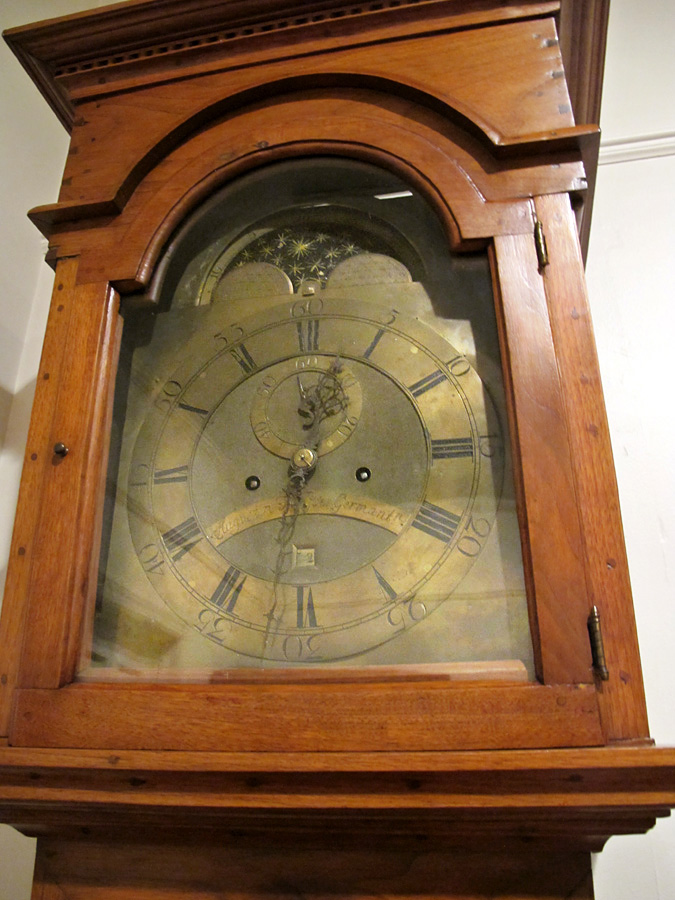
Various floor clocks, including a particularly attractive face on this one.
Rifles from the 1790s-1907 Henry Gun Works.
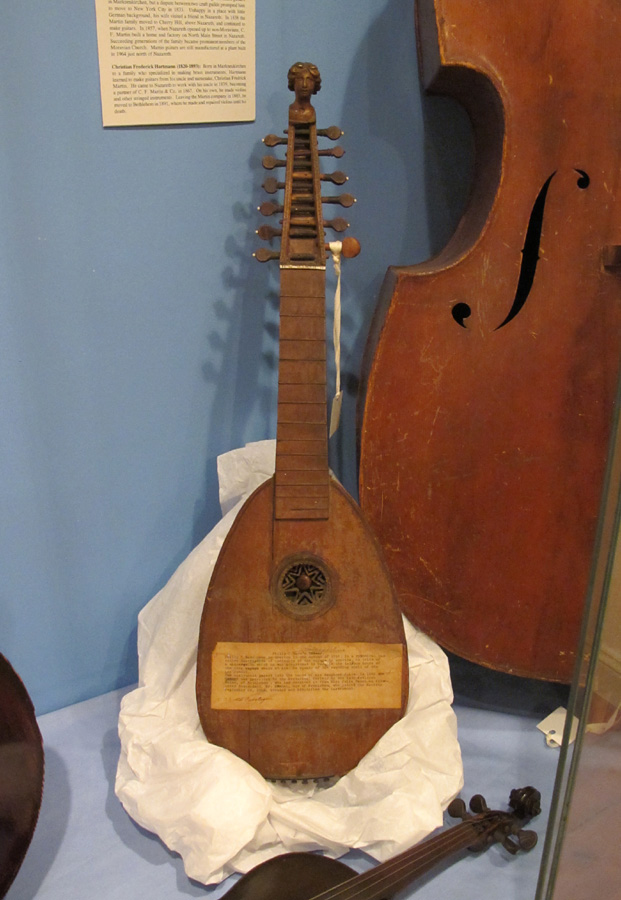
I was thrilled to see a c.1750 Moravian cittern on display – what some say was the most likely ancestor of what became London’s guittar (English Guitar). The (probably German) maker and construction date remains unknown; the instrument came over with its owner/player in 1751.
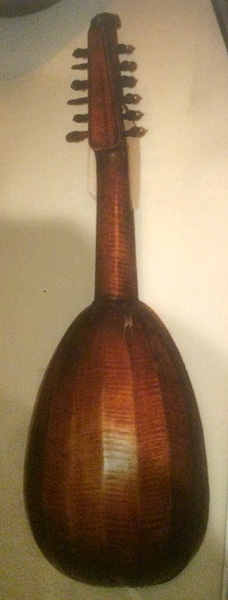
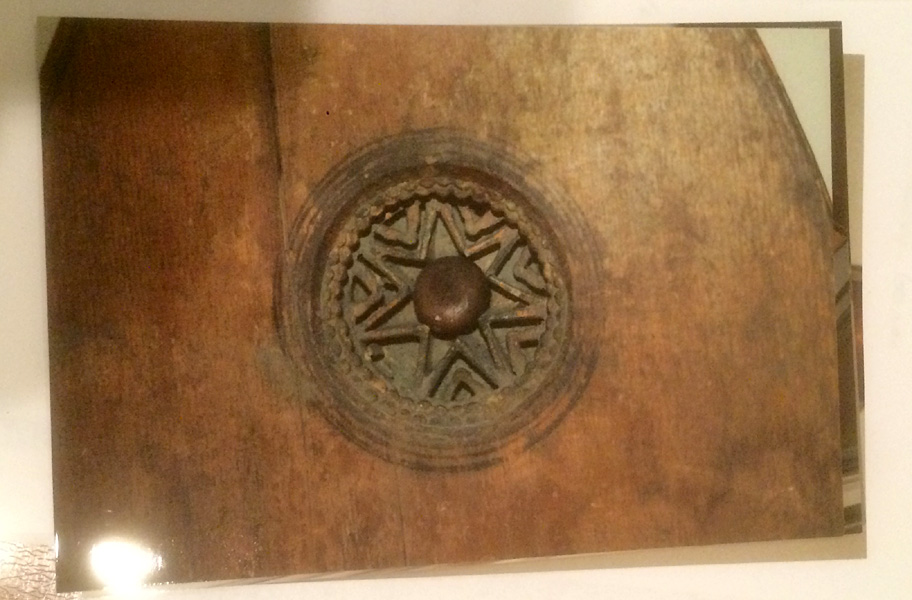
The staff brought up the file for me so I could see the notes (which may have been in examiner Laury Libin’s handwriting no less) and also photos of the back. I subsequently stumbled upon a book with a 2008 article on the very instrument with photos and full scholarship as well. You can see the more lute-like body shape and lute-style bowl (“lute-cittern” being another vernacular term for it). As expected, once home I saw it referenced in Poulopoulos’ guittar thesis – glad I saw it firsthand!
___

During the afternoon at the museum, we also strolled a couple of blocks over to Dale Unger’s American Archtop guitar shop & school. It’s set up in a wonderful large open room – a former church building he bought long ago from the Martin Co.’s Dick Boak.
That’s Dale on the right; his son Tyler with long hair next over (sorry, iPhone pan shot, so some squishy faces).
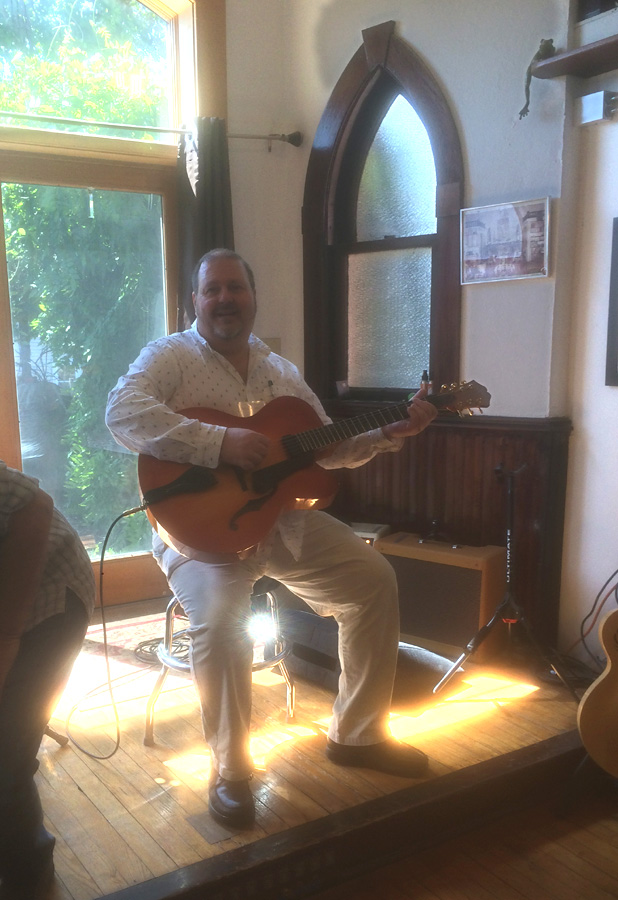
AMIS guitar specialist Matthew Hill took one for a spin and entertained the crowd for a bit.

___
We next hopped on the busses for another short ride to the Martin factory, where Dick Boak and the Martin Company hosted us for the evening. After drinks and hors d’oeuvre, Dick gave us all a lengthy personal guided tour of their (one might almost say “his”) wonderful museum. This was my first visit, and I was not disappointed!
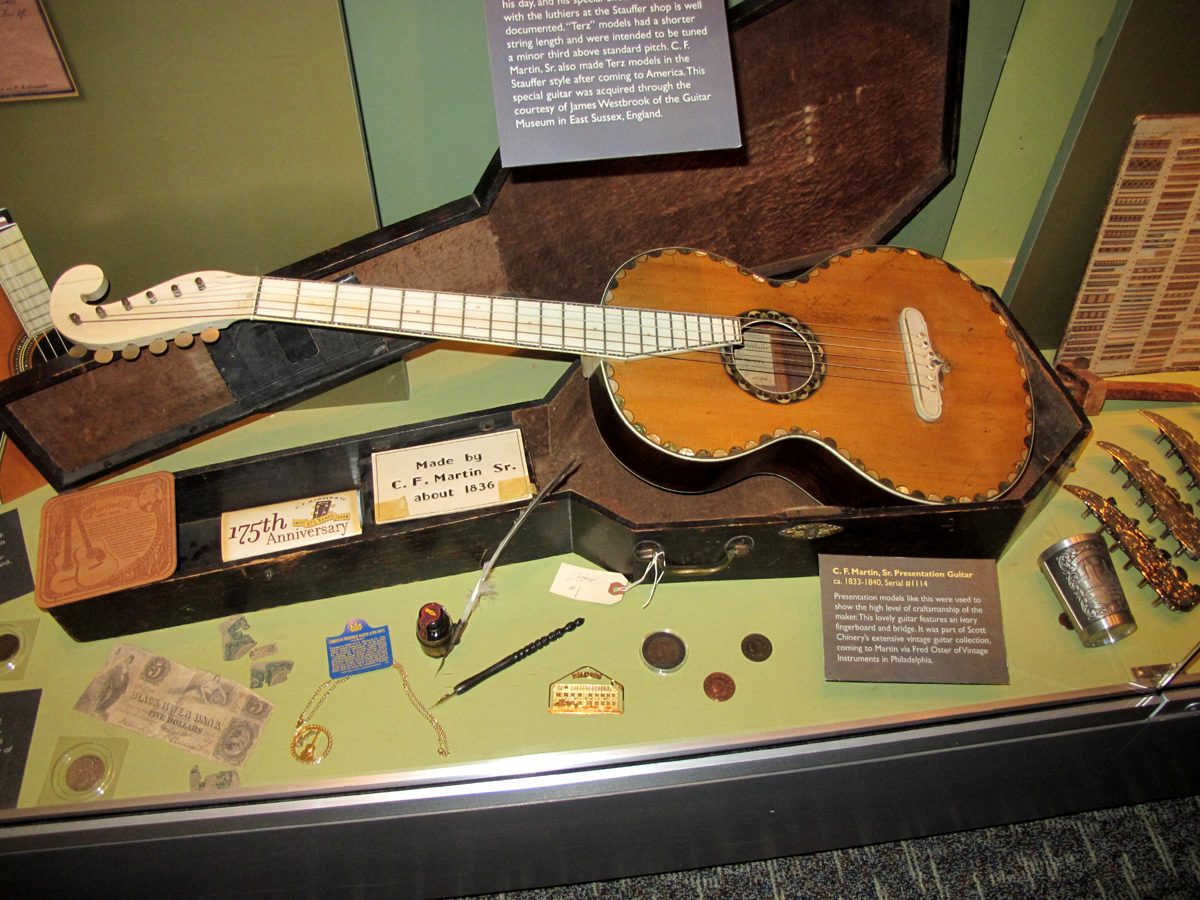
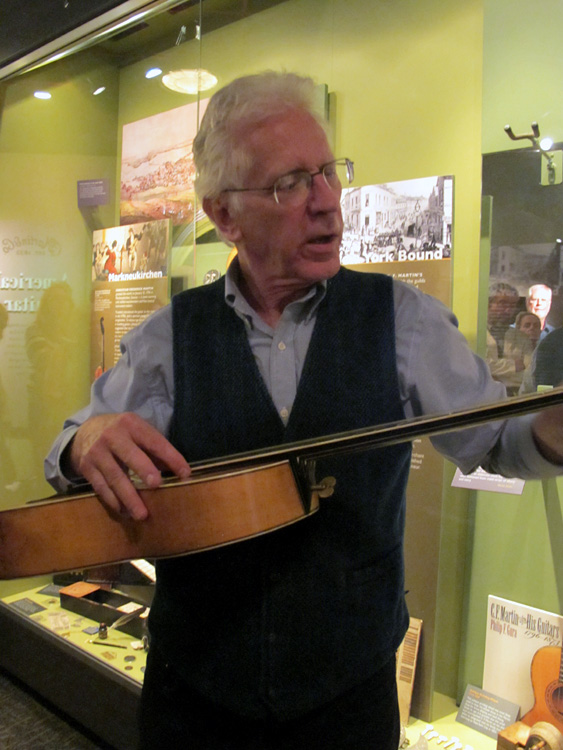
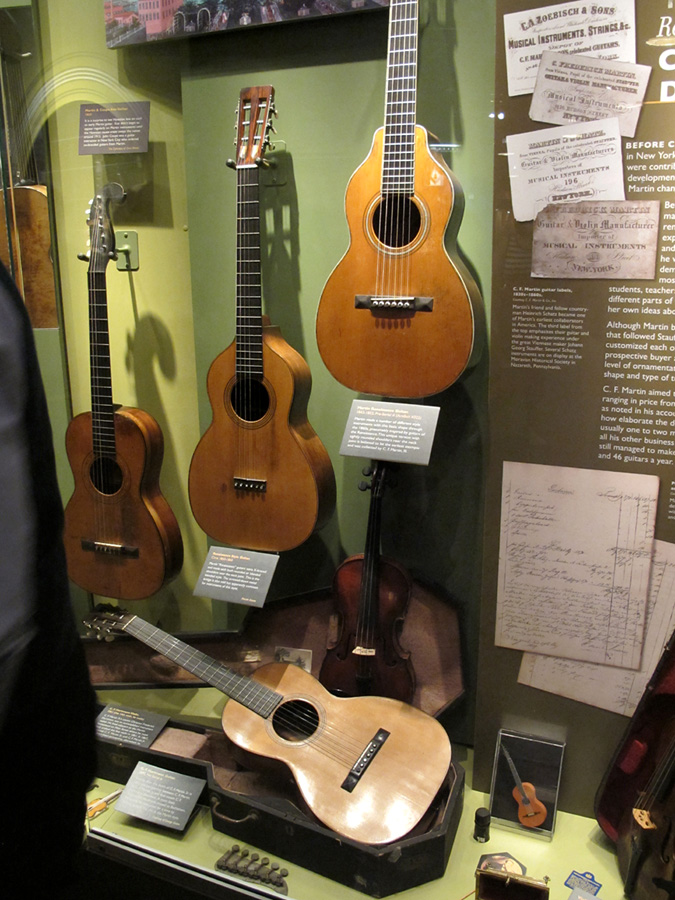
While there are many instruments on display from Martin’s modern factory, including many signature and anniversary guitars, they are also committed to purchasing historically important instruments – bringing them back home, as it were. I noticed several on loan from collector/Martin book author Peter Szego as well.
It was fun to see Dick simply unlock a case, pull out a rare instrument and pluck away on it. A bit later he actually pulled out their $600k purchase from the infamous Hank Risan (IRS-mandated) auction and handed it to me to play. My hands still a bit greasy from hors d’oeuvre, I passed and let someone else risk it!
The incredible center guitar (a 1902 0045S, I believe) – came from the Richard Gere collection, auctioned in 2011.
A Martin mandocello at right – kinda cool, I didn’t recall them making any.
Dick said the beautiful bandurria below was the only one they made.
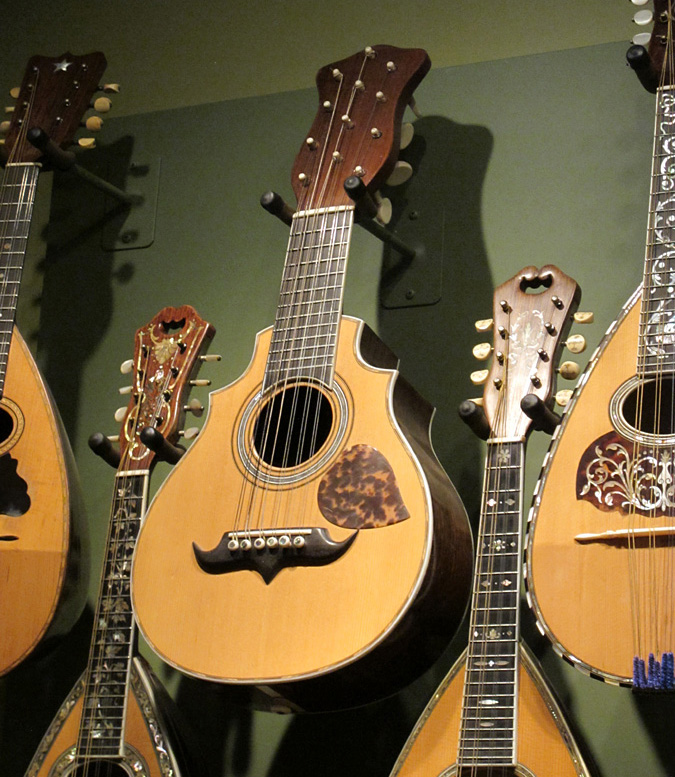
On the other hand, Dick confirmed for me that they made exactly two of the c.1895 harp-mandolins (lower left in display) for patentee Claude H. Gaskins (collector Robert Corwin has the other). UPDATE Feb 2021:A museum curator finished extensive new research in the Martin archives and we now know that 22 were built (in various styles) between 1895 and 1899, with at least five surviving.
Dick took out Martin’s fanciest bowlback model for a closer look.
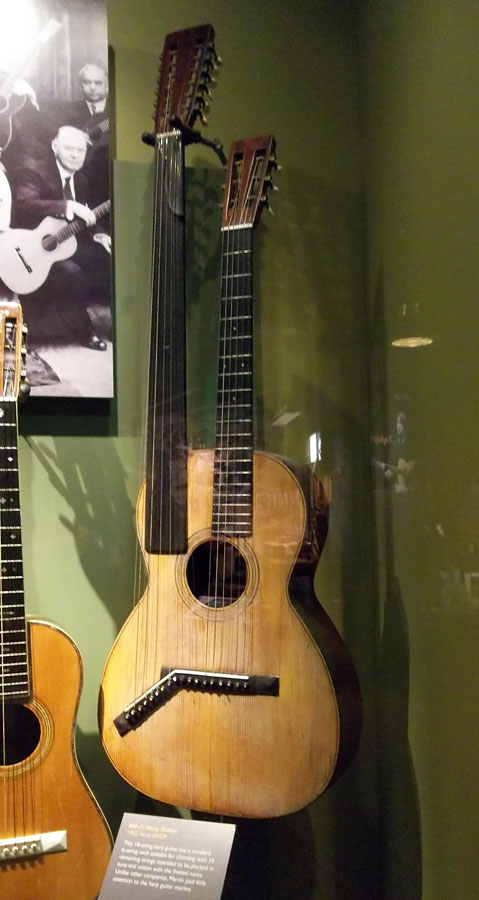
I’d seen images of their 12-bass 1902 harp guitar of course, but wanted to get a closer look at the interesting bass nut (original?) that provides tapering string lengths for the open strings. (Yes, I also noticed that someone chose to string it like a 12-string guitar instead of chromatic sub- basses.)
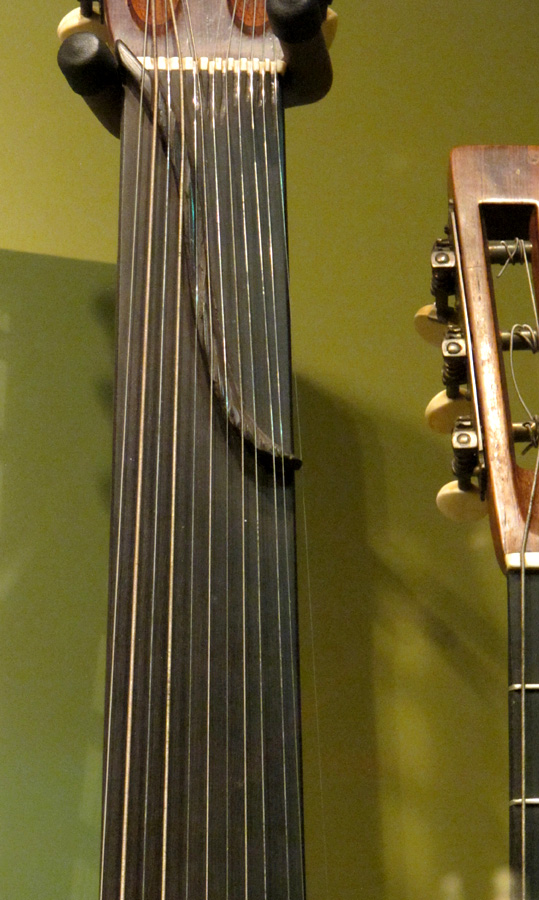

The exhibit above re-creates what the C. F. Martin’s original workshop may have looked like (as these are some of his very tools). Sitting in the middle is an instrument by one of Martin’s fellow Stauffer disciples back in Vienna, Friedrich Schenk. Martin aficionados will remember this from Mike Longsworth’s book and my blog of 2011 as the “Dubetz” harp guitar given to the Martin Company in the early 1900s to be copied.
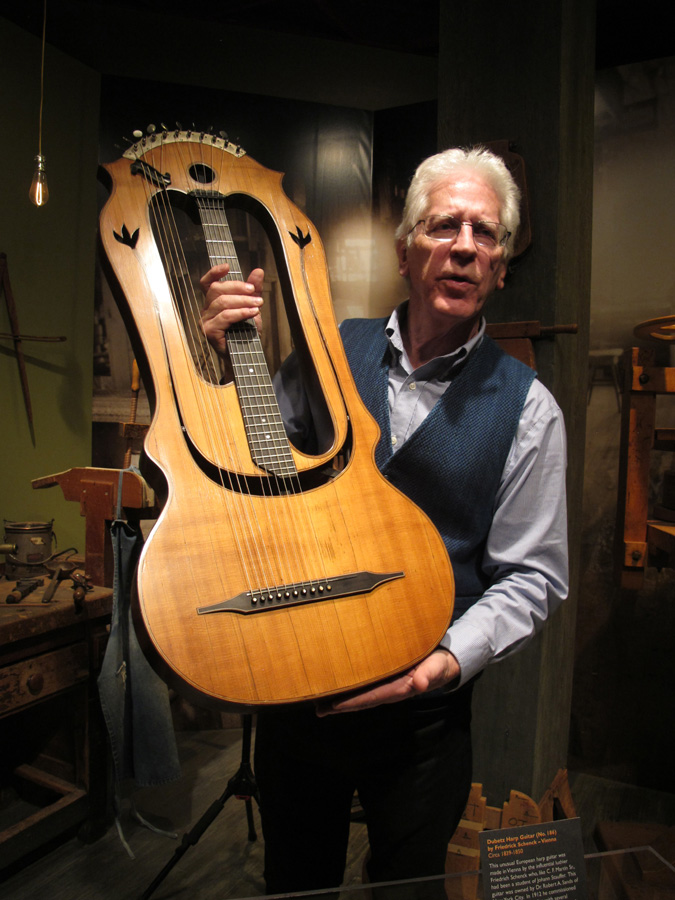
It was falling apart then and remained in pieces until Dick decided to have it restored, which it now is (I got a shout out during Dick’s talk, having supplied the bass strings). As you may remember from my exciting discovery just last year, the Martin “copy” finally turned up after a hundred years. Though the family brought it in for Dick to examine and photograph it, they wouldn’t part with it. Dick also said that two were built.
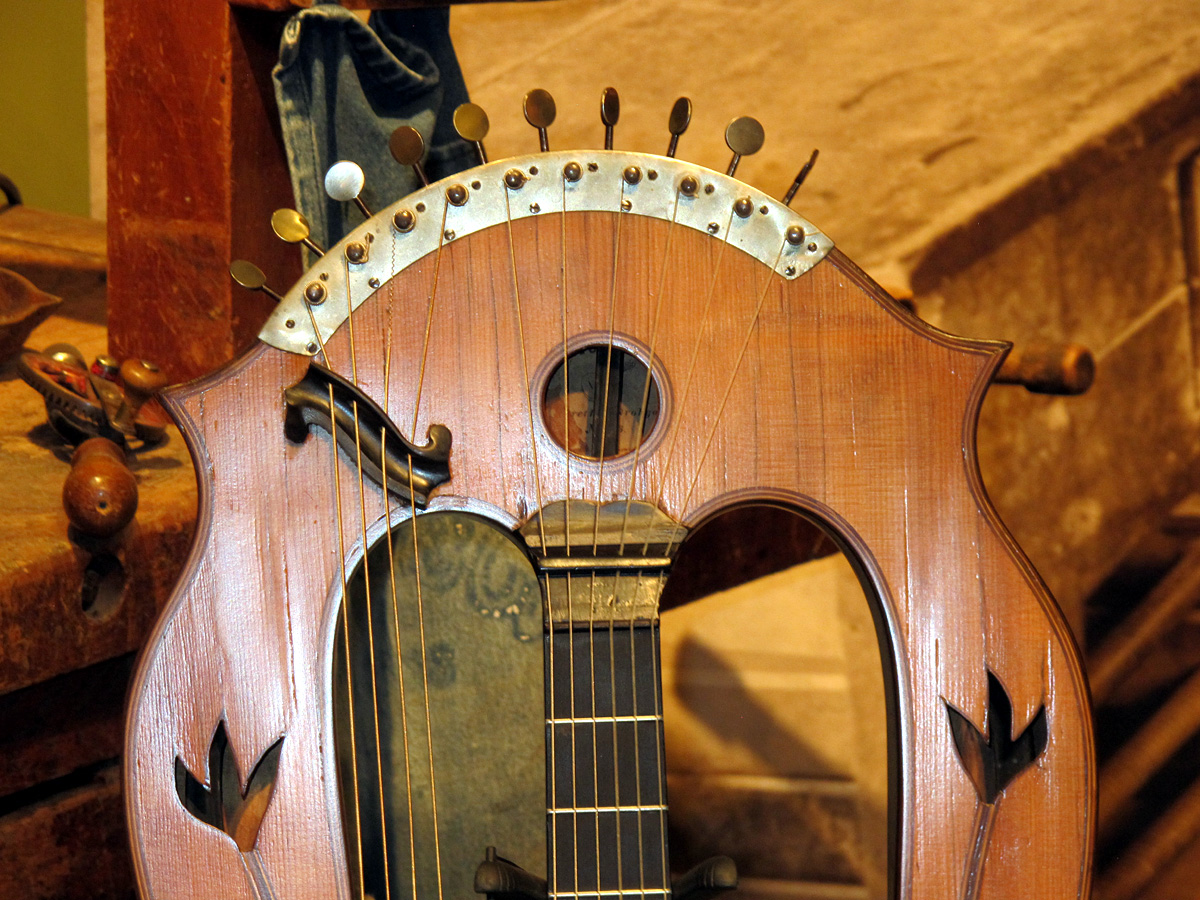
The exhibit above re-creates what the C. F. Martin’s original workshop may have looked like (as these are some of his very tools). Sitting in the middle is an instrument by one of Martin’s fellow Stauffer disciples back in Vienna, Friedrich Schenk. Martin aficionados will remember this from Mike Longsworth’s book and my blog of 2011 as the “Dubetz” harp guitar given to the Martin Company in the early 1900s to be copied.
___
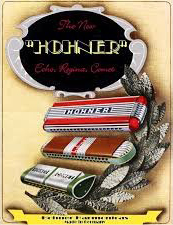
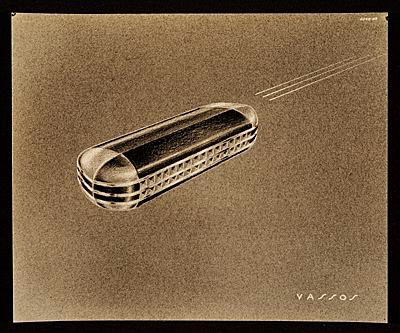
Friday morning’s papers included brass instruments, a remarkable study and theoretical recreation of the potential earliest lute by Charles Pardoe (who won the Society’s best paper award), and my favorite – Jayme Kurland’s “instruments of John Vassos.” Hers was foremost to explore if he had had a design hand in the BMFA’s c.1940 Story & Clark electronic piano (turns out he didn’t), but Vassos’ art deco harmonica designs for Hohner were the draw for me. I’ll be checking eBay for that comet!
___
Friday afternoon was open to visit several facilities that had opened their doors to us. I went first to the Moravian Museum, a “common house” built in the 1740s (where 50 or so Moravian church members lived communally in a “choir system” – i.e., arranged by marital status, etc. Marriages were orchestrated by the elders but at least the women were allowed to say “uh, no thanks.”
They had a few instruments, including (above) early 1800s “English bass horns” (German-made examples were uncommon, according to Herman Heyde standing next to me at the time).
Brass bands were fairly common; I was intrigued by the Moravian Trombone Choir of 1901 – there’s a recording I wish I could hear!
Similarly intriguing was the 1800s apothecary cabinet. On top, a full compliment of medicinal vials…I shudder to think what the translated Latin might reveal.
___
Next, I was late (but thankfully not too late) to our private beer-tasting at the Moravian Archives, which happened to be running (not just for our benefit) an exhibit on “Moravian Music and Instrument Making” (below).
Some authentic Americana:

___
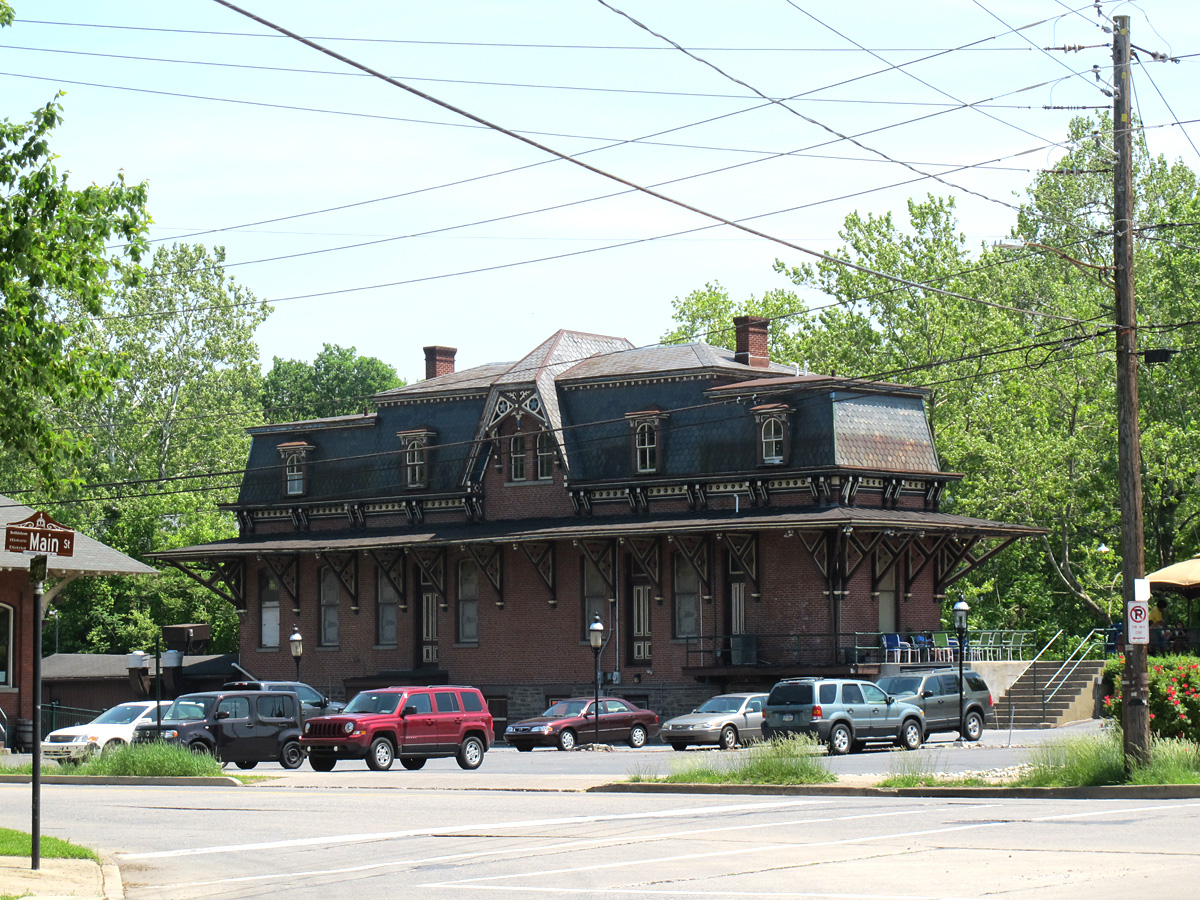
I was the last one out, having discovered old Journals for $2 each – one of which (as it turned out) had a scholarly article on Moravian citterns, including the very specimen I had seen the day before. Having been ditched by my colleagues and having whetted my appetite with some of the local brews, I had dinner in this wonderful converted train station. I discovered too late that it had become a specialty “cigars allowed” establishment…even inside. The imbibing patrons fell into two distinct groups: precious hipsters and portly white men (is this normal? I have no idea). Fortunately, their earnestness ensured only the finest quality secondhand smoke. I don’t recall the local brand of my 8.0% brew, but it wasn’t enough to prepare me for the evening.

This was a challenging 2-hour panel with audience participation entitled “Collecting for the Future: Options for Private Collections.” Turns out not a lot (of options). Guess who was on the panel? Yes, and I got my list of preparatory questions the week I learned that fellow panel member Marlowe Sigal had died (with future plans for his 600+ keyboards and winds left as unresolved as my own). It’s a topic we need to continue each year, and hopefully within different formats (to better allow plainspoken folks like myself to effectively participate, for one thing). Offhand, I can think of another hundred collectors like me who should be a part of this increasingly-important conversation (sadly, few of them are AMIS members…yet!).
___
Saturday (pretty much all day) brought the last of the paper sessions. We were more of a captive audience at this AMIS (all in one place with no overlapping segments), so I sat through all for once. Stayed (mostly) awake and learned about things I otherwise wouldn’t have ever come across (or dreamt of – the Alvin Lucier “live” performance piece where his recorded monologue was played back with each being re-recorded and used for the next playback…and so on. The technique captures the room acoustics, turning the speech exponentially into a sort of musical mush.)
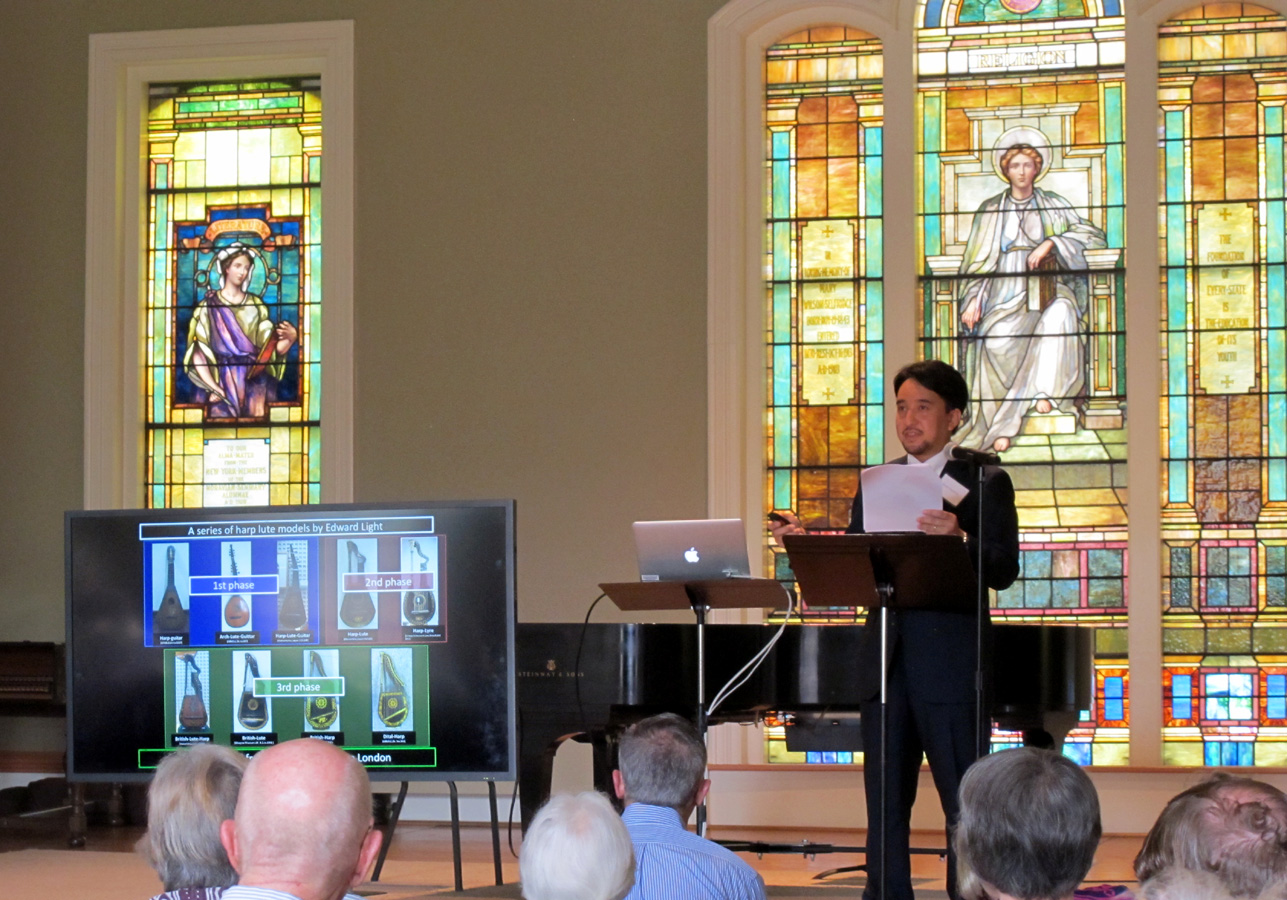
My friend Hayato Sugimoto (above) followed up his 2015 thesis with more findings and thoughts on the harp-lutes of Edward Light. I like how he’s begun to organize these by form and features that correspond to the invention timeline and manufacturing process (e.g., the recently-available iron lathes triggered the switch from the scroll to the plinth on the harp-lute columns. Simple, now that he said it!).
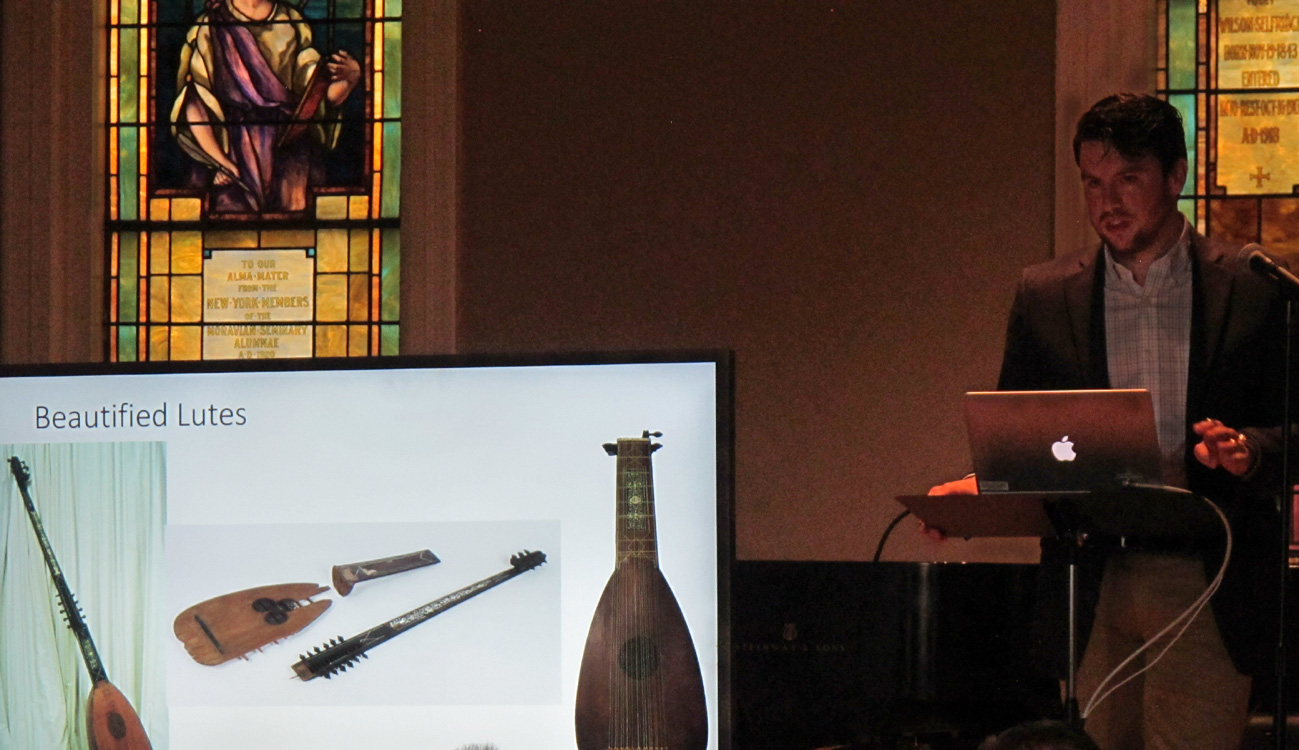
Byron Pillow (above) investigated the beautified lutes (theorbos in this case) from the Stanford White collection, which I’d never heard about. It reminded me of the Franciolini creations (see my Stearns Collection blog), several of which I’d just seen at Oster’s place (most up on his web site) – but Byron explained how these were very different, Francolini’s having overly gaudy additions on the front surfaces, while these feature fancy cabinetry maker inlays on the back (for hanging flat on the wall?). Several difficult-to-see photos Byron included really intrigued me; he’s since forwarded them (and more), which I’ll save for a separate upcoming article. UPDATE, March 2020: My blog on Stanford White is now finished.
Final session: Cleveland Johnson now works for the Morris Museum, housing the incredible Guinness Collection of Mechanical Musical Instruments and Automata. In our earlier book raffle, I had unknowingly picked up Guinness’ original 1982 catalog. I already had the Morris Museum’s beautiful 2011 book in my library, so was delighted to hear more from Cleveland and his curator/conservator colleagues. I wish I had had time to visit the museum, which was pretty close by in Morristown, New Jersey. Luca Roca next discussed his restoration of an 18th century salterio, then Jonathan Santa Maria Bouquet (pictured below, plus assistant Arianna Rigamonti) revealed an in-depth investigation into “violins with sides” from Scotland collections.
The closing speaker was my British friend (currently in Edinburgh) Daniel Wheeldon (above right). Last year I mentioned his work on the Museum’s decacorde.
Here, he explained his efforts to recreate the missing brass tuning and sharpening mechanics…by metal printing. Yes, just like your kids are doing with plastic in shop class, he is doing with the latest “brass powder method.”
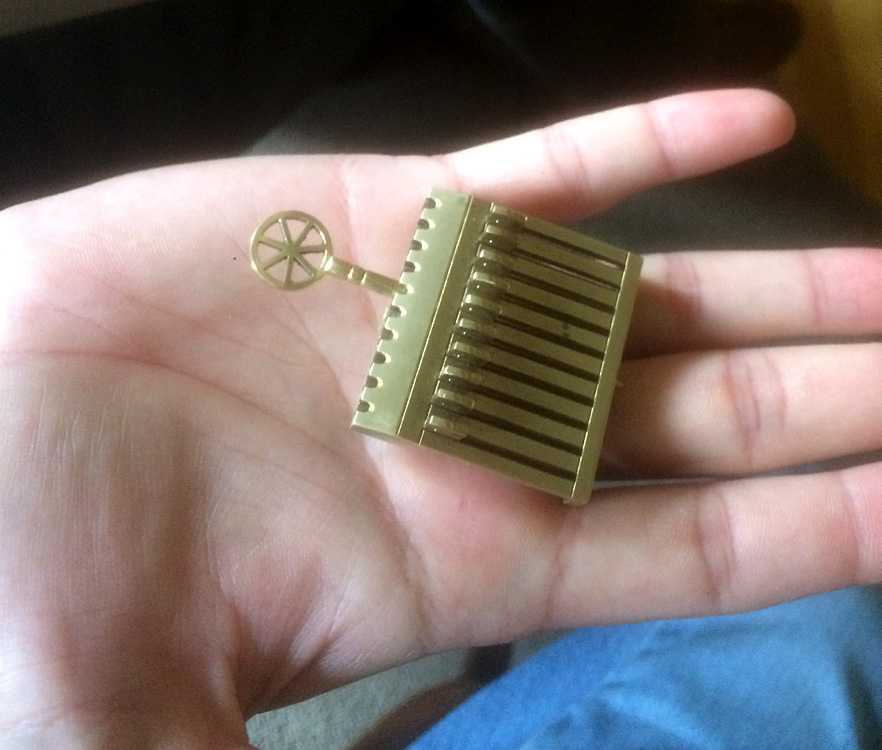
After drawing and modeling Preston’s 1760’s guittar watch key tuning mechanism, he’s printed that as well.
Remarkable!
___
AMIS 2018 closed (in sort of a reserve order) with the banquet dinner, then a special closing concert with Bradley Brookshire (major Manhattan harpsichordist) performing a full evening of music on a Lautenwerck and harpsichord built by Willard Martin (who graciously delivered both to the hall).

Sharing a glass with rare instrument dealer Jean Michel Renard from France.
At dinner, AMIS member Bill Hettrick delivered his mother’s Martin taropatch to proud new owner Matthew Hill.
Maybe it was the wine, but my favorite remark of the evening – heck, the whole week – was by Aurelia Hartenberger (a fellow collector, whose little assortment currently numbers some 3500 instruments). I don’t remember why it came up, but – as casual as always – she told me “I own Phyllis Diller’s harpsichord.”
After the follow-up, I responded that there were at least three things about this I couldn’t believe: that Phyllis Diller (of T.V. Bob Hope specials and the like) was a concert pianist, that she owned a harpsichord, and that Aurelia (of course!) has it.
You just never know what you might run across at AMIS.

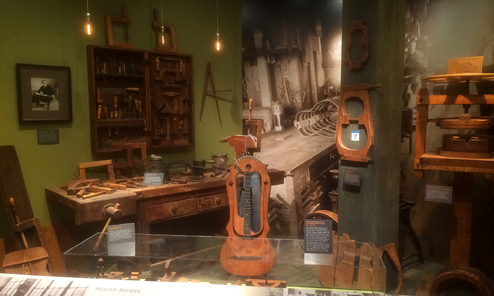
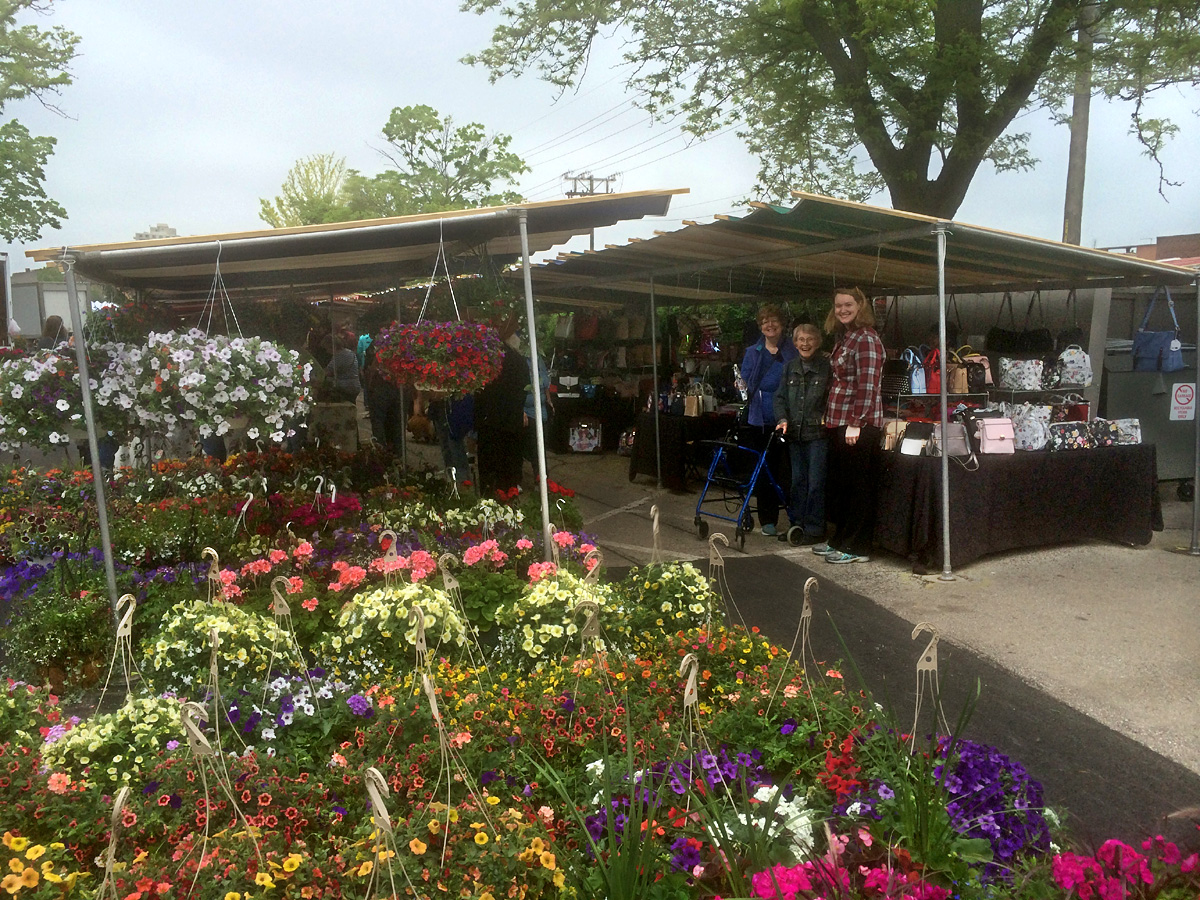
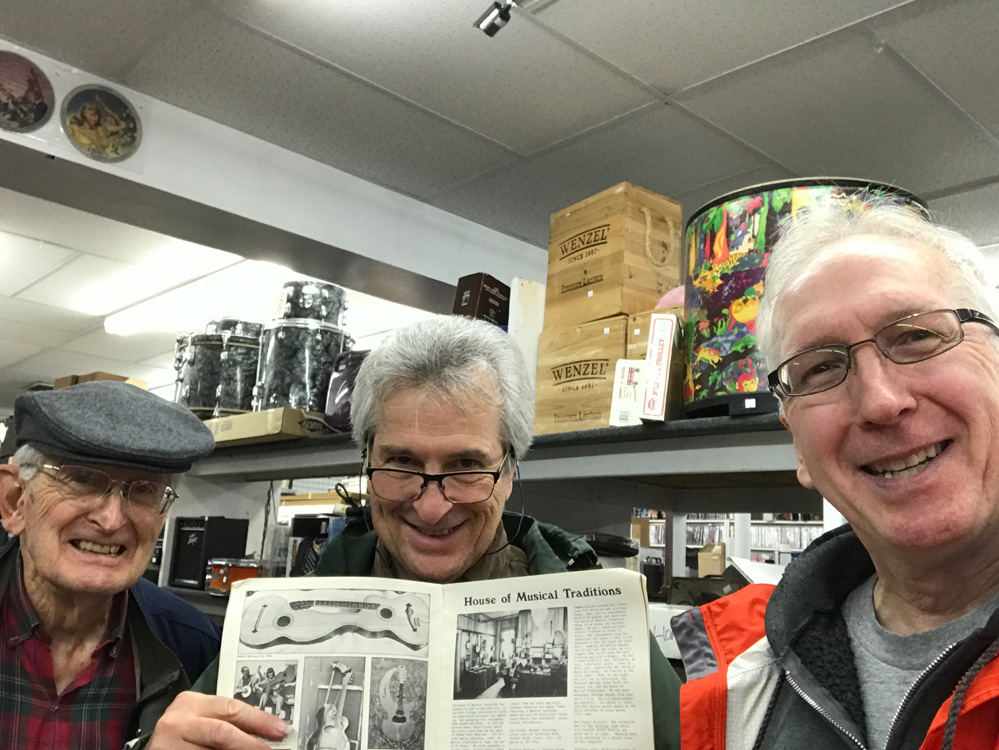
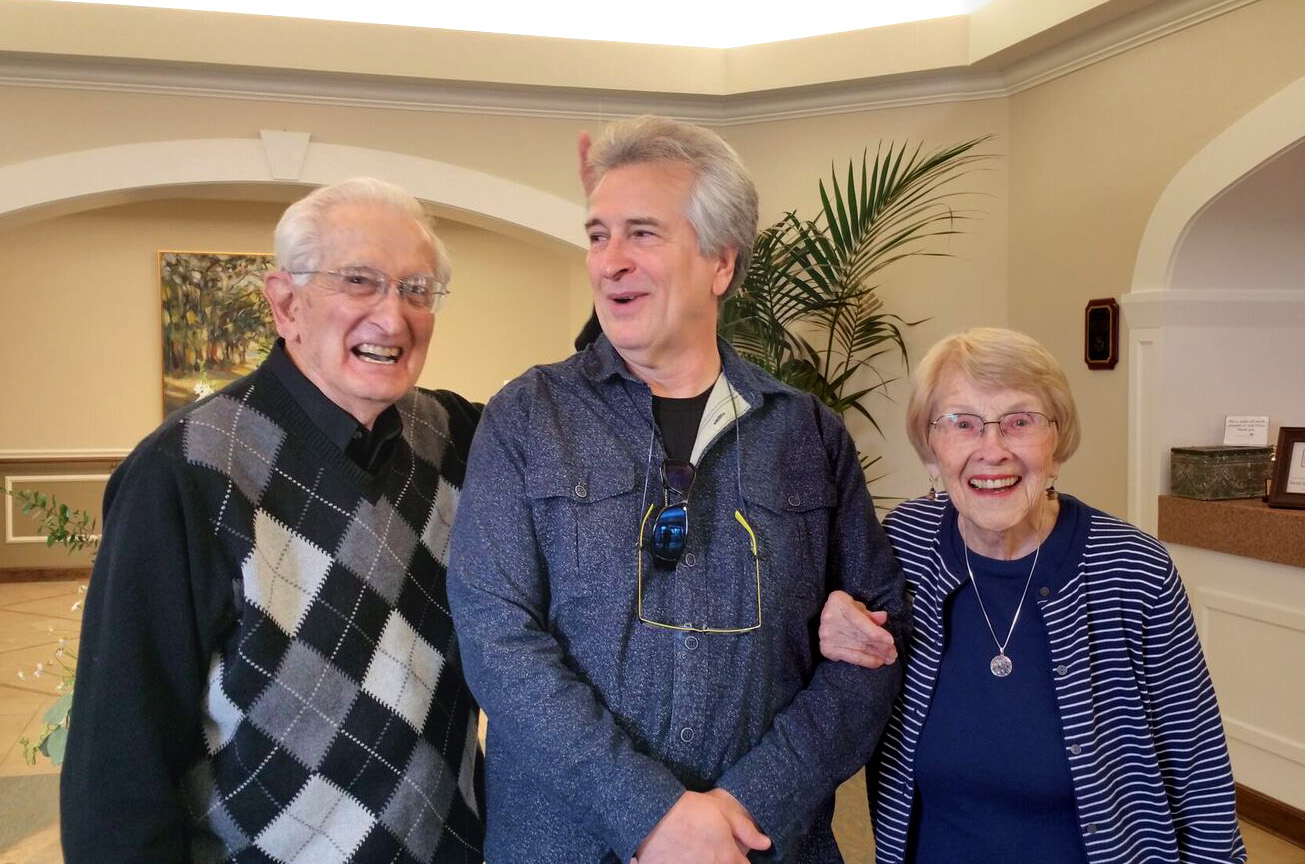
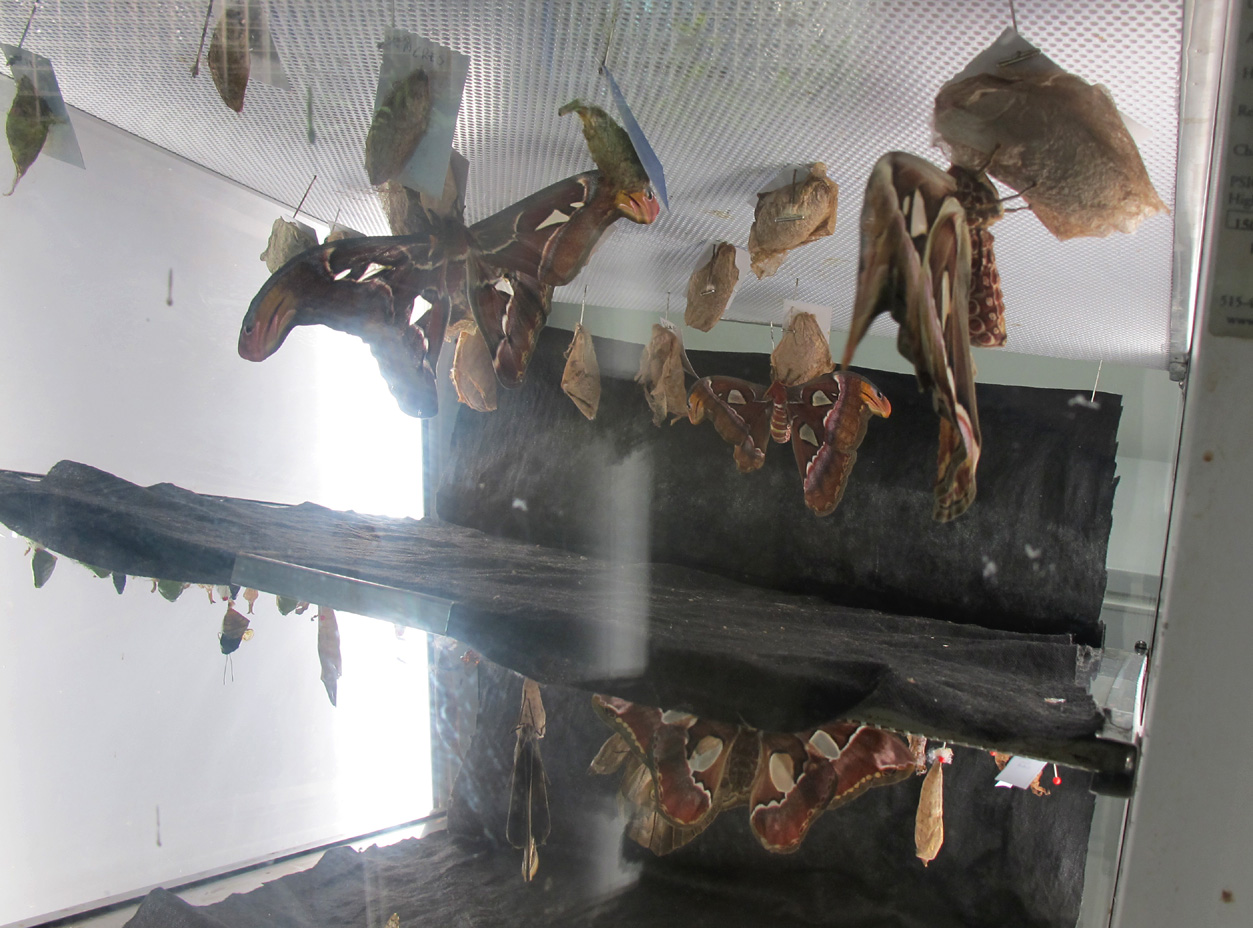
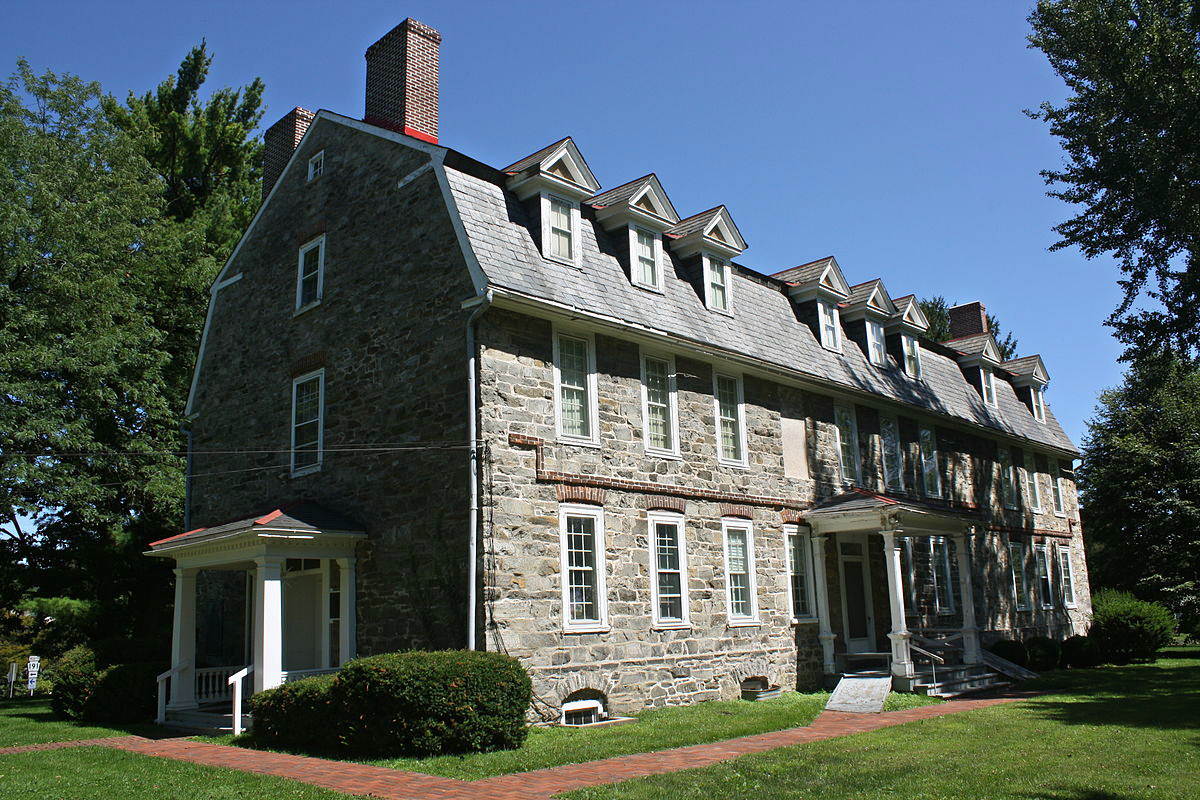

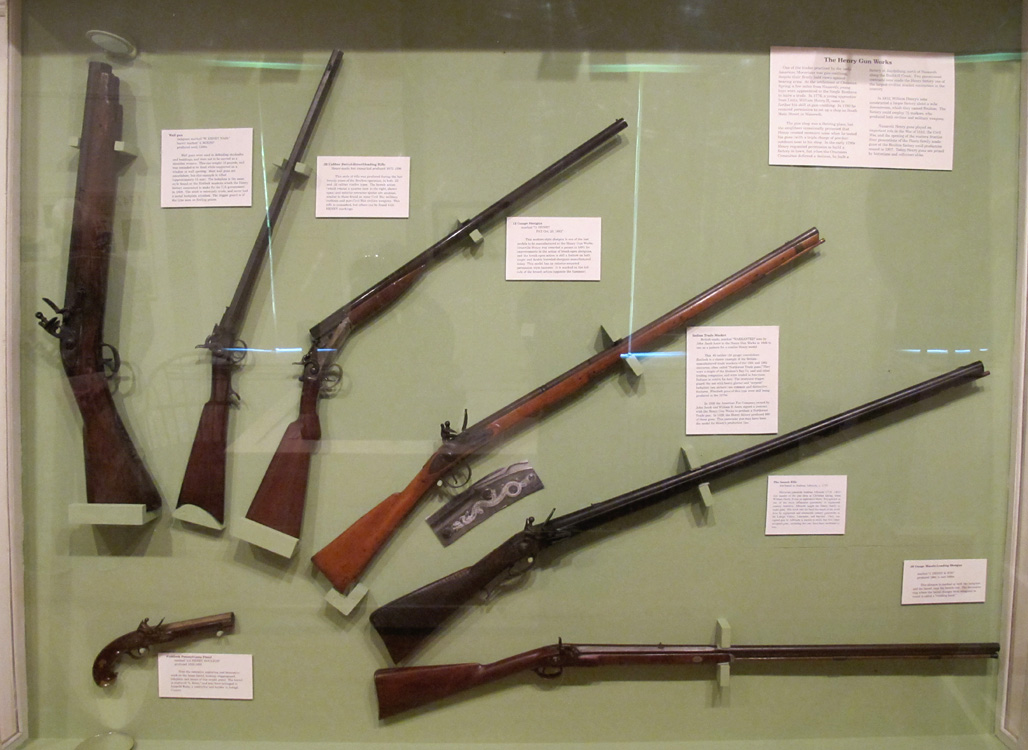


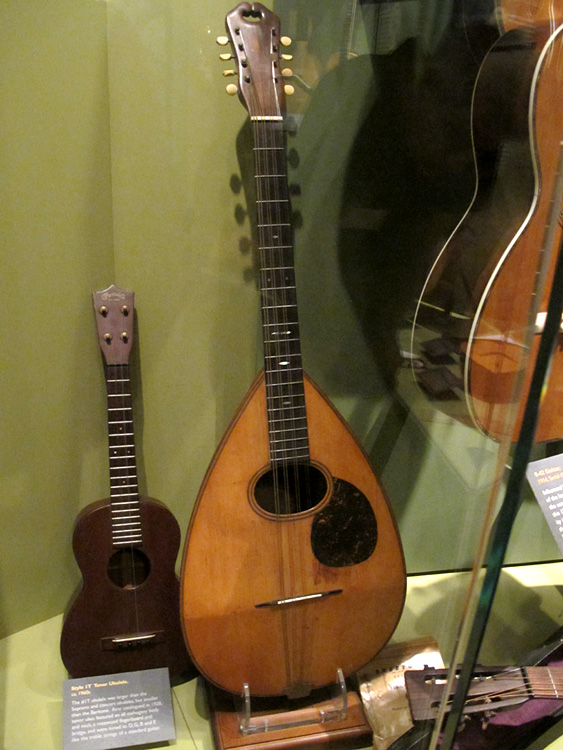

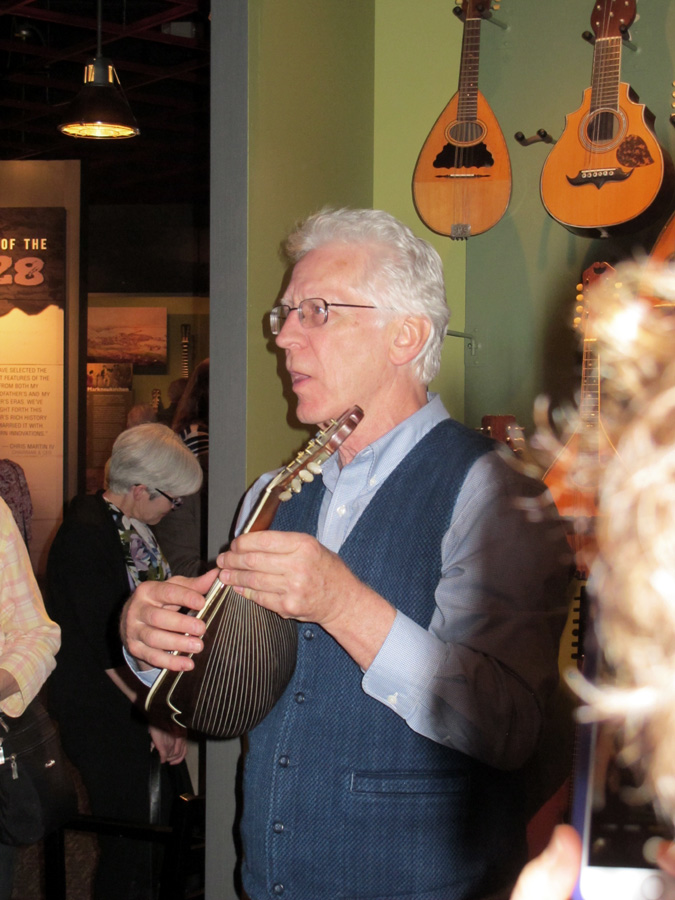
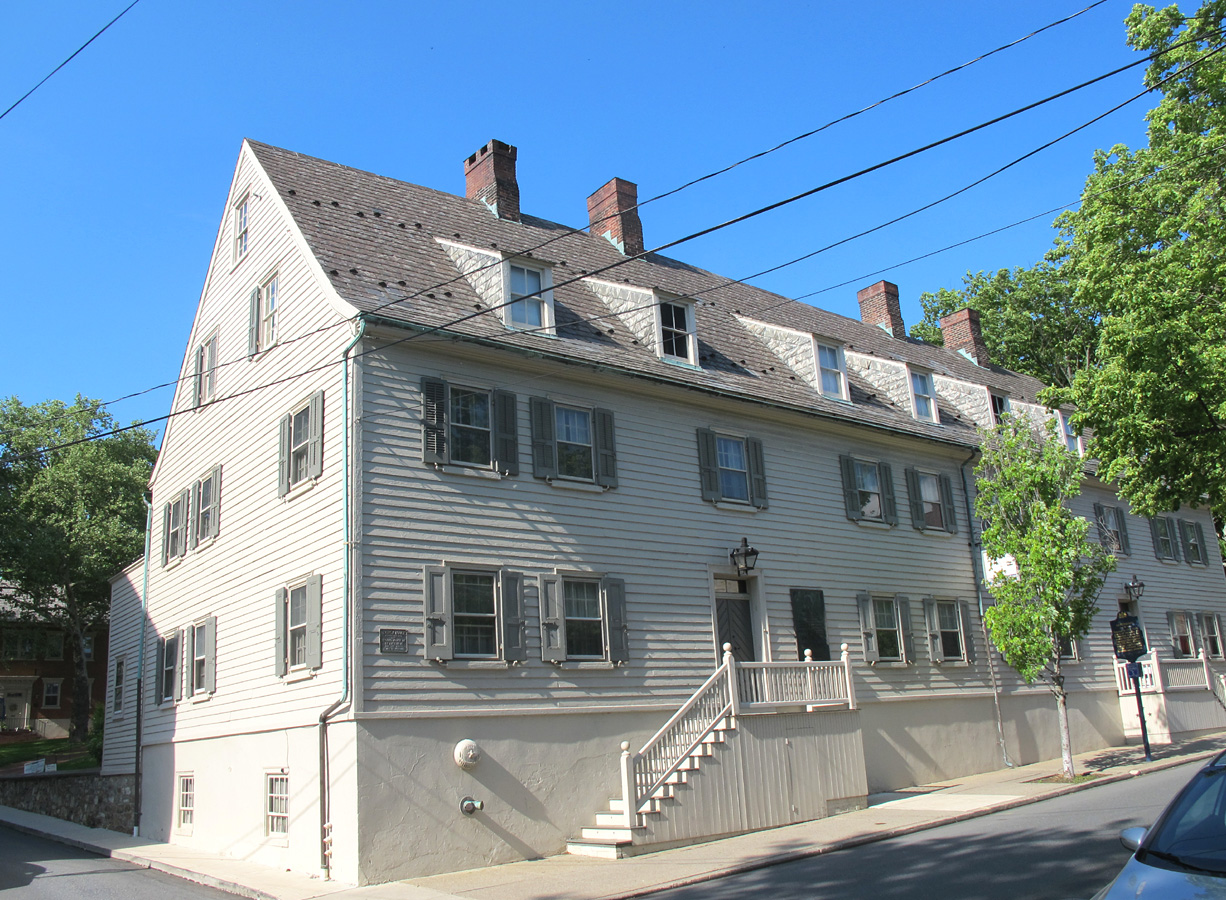
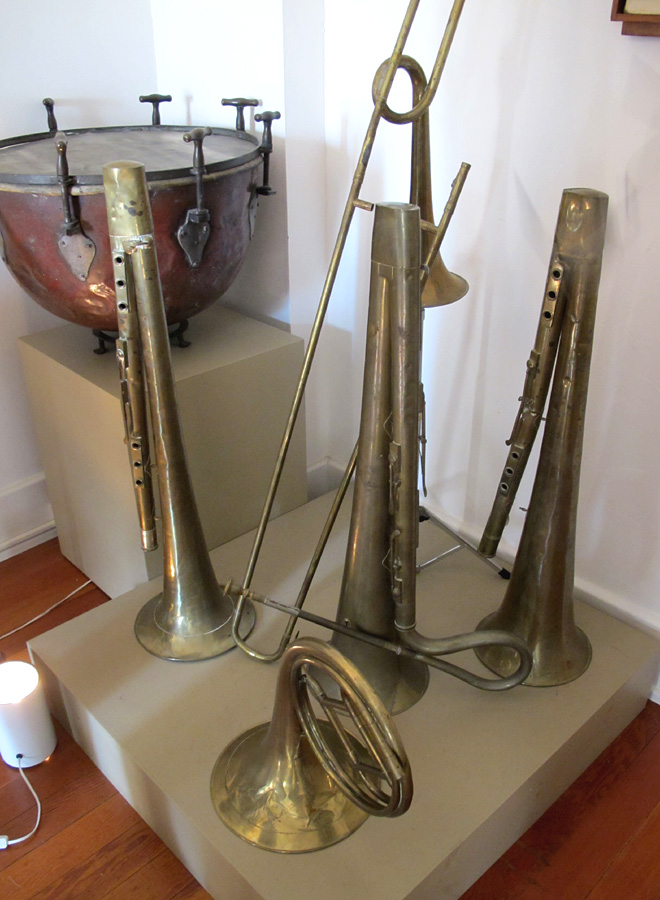
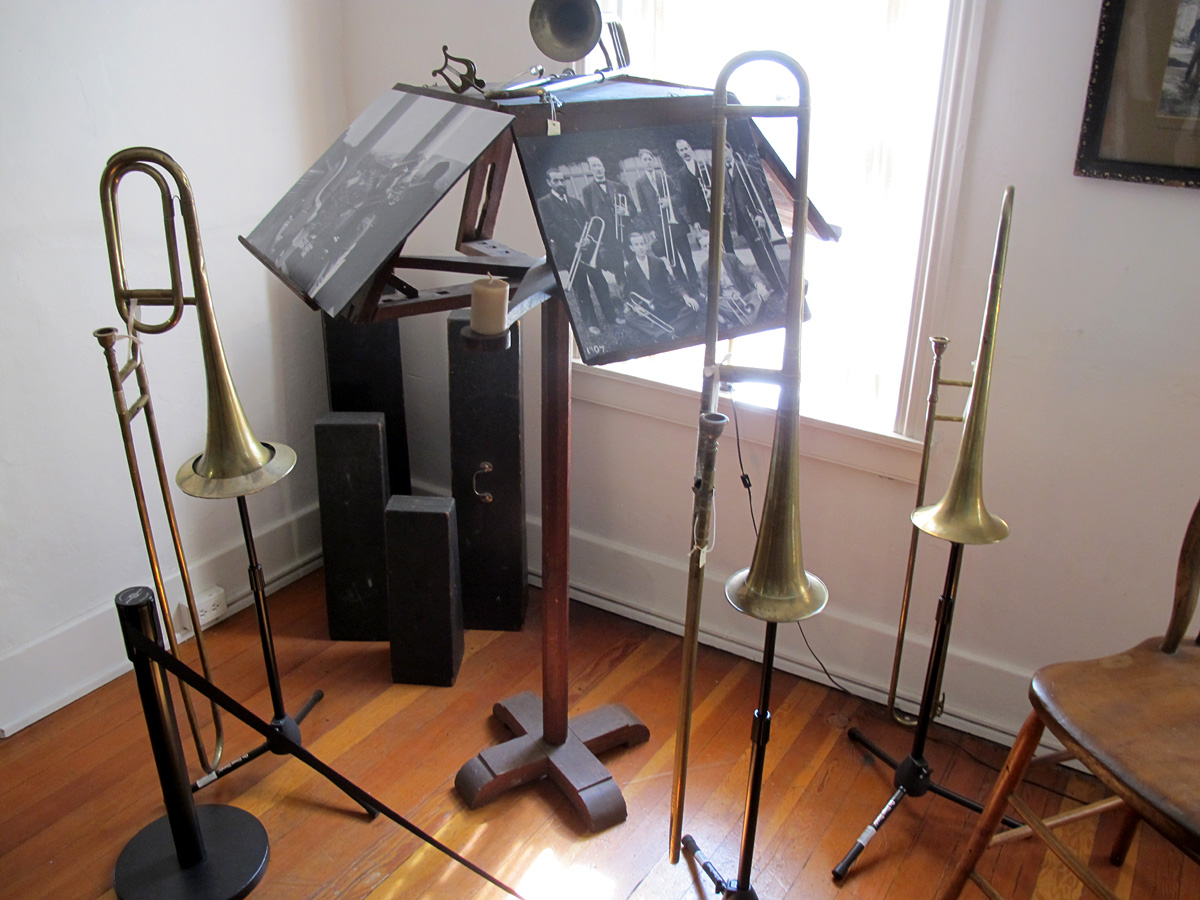
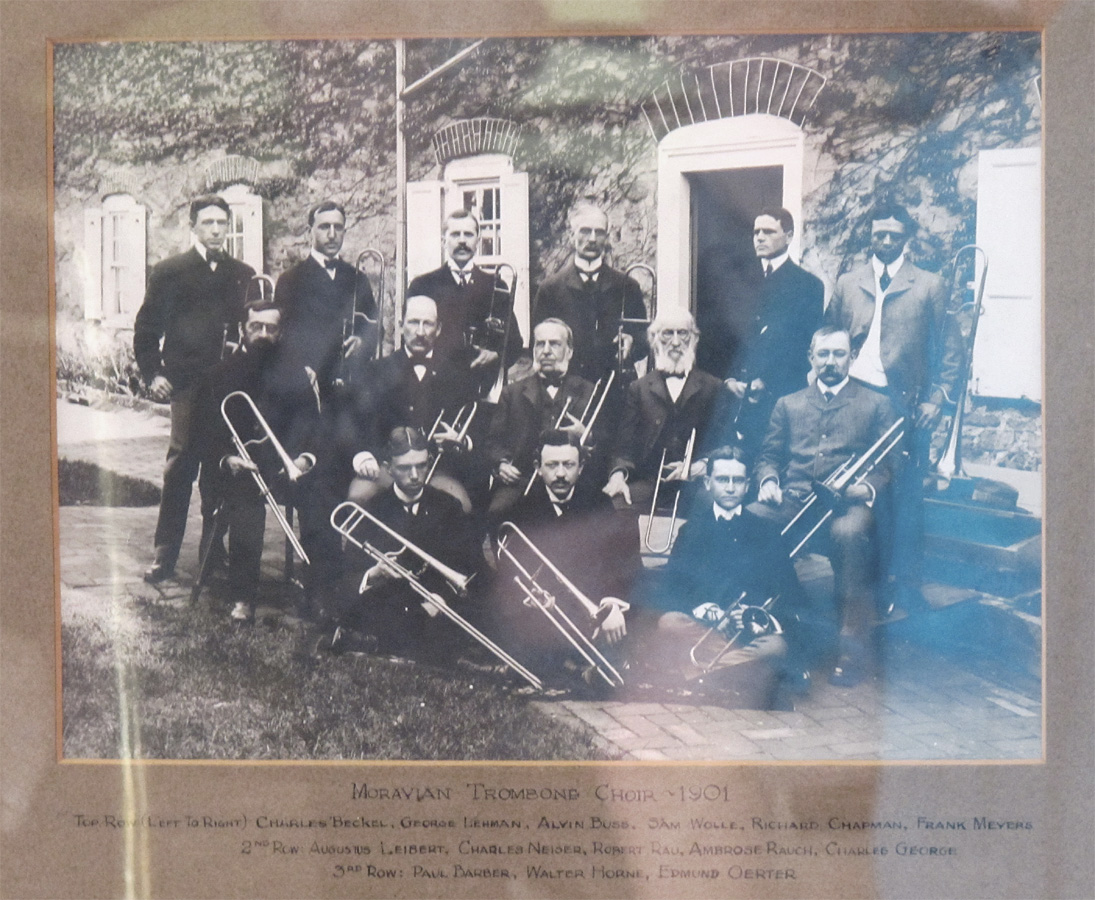
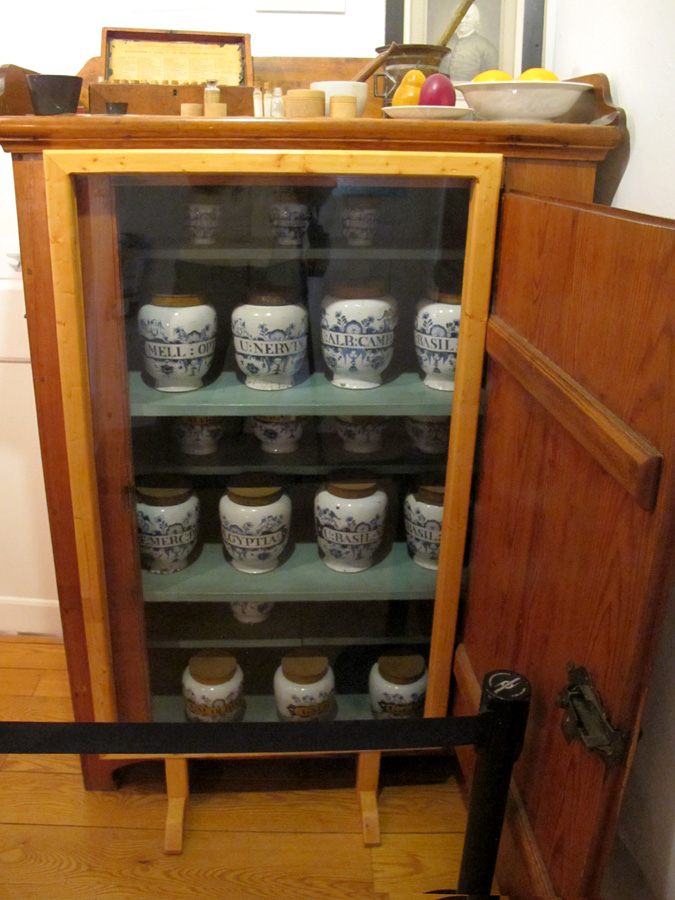
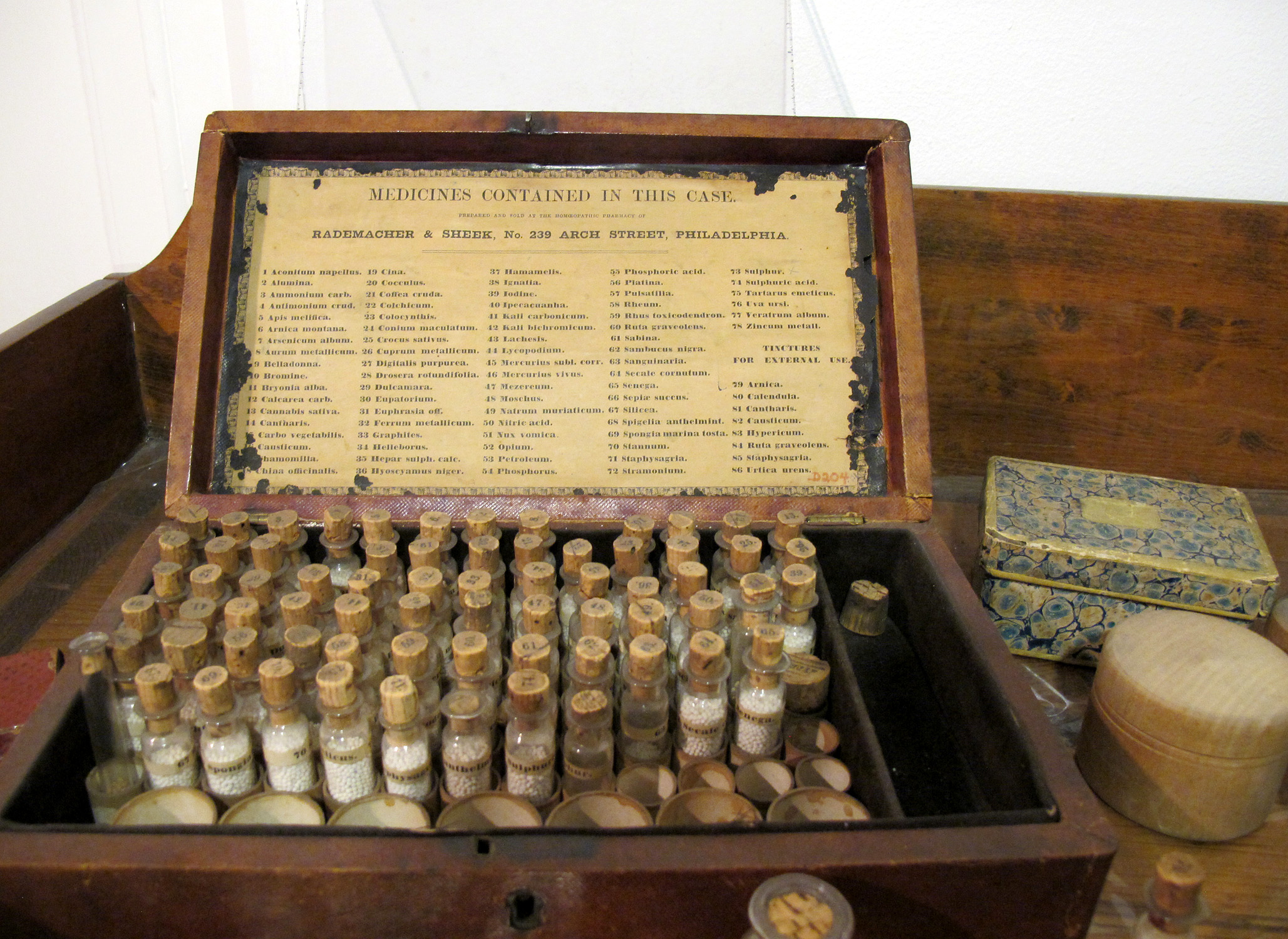
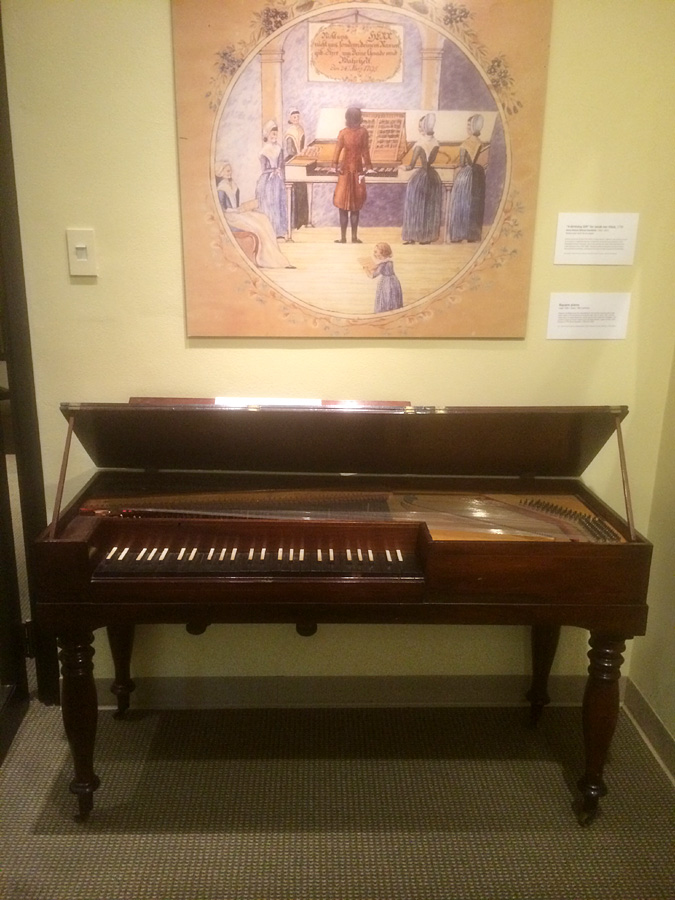

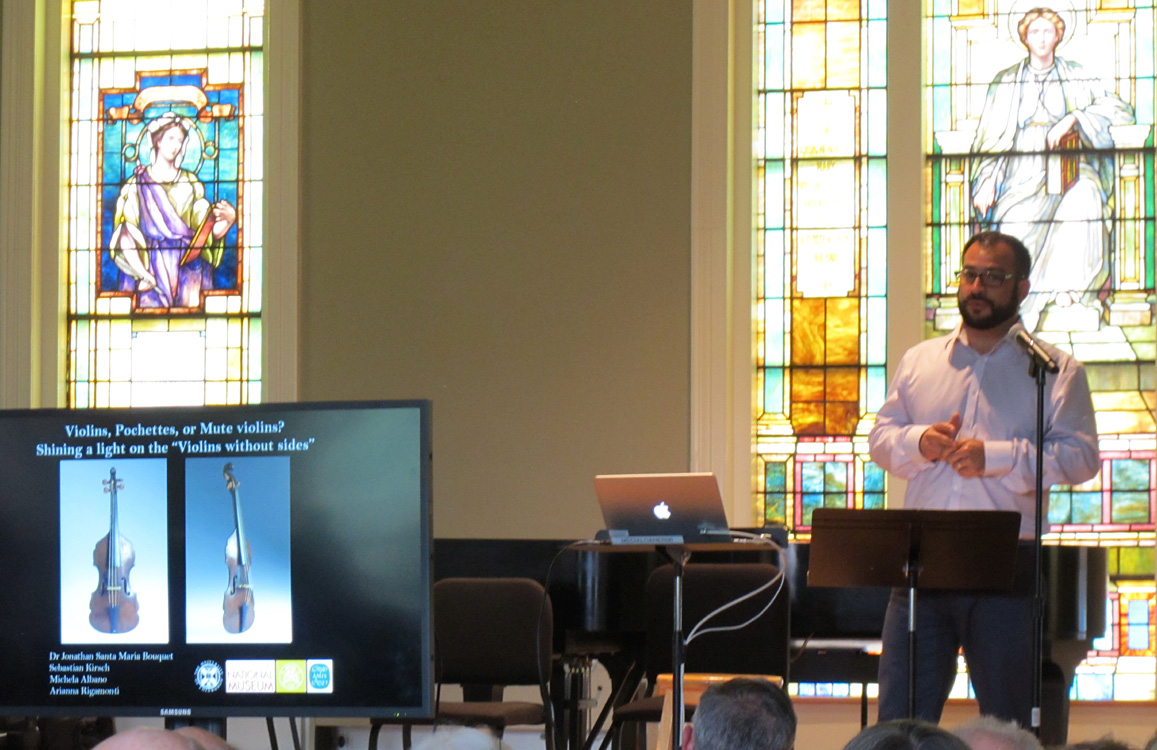
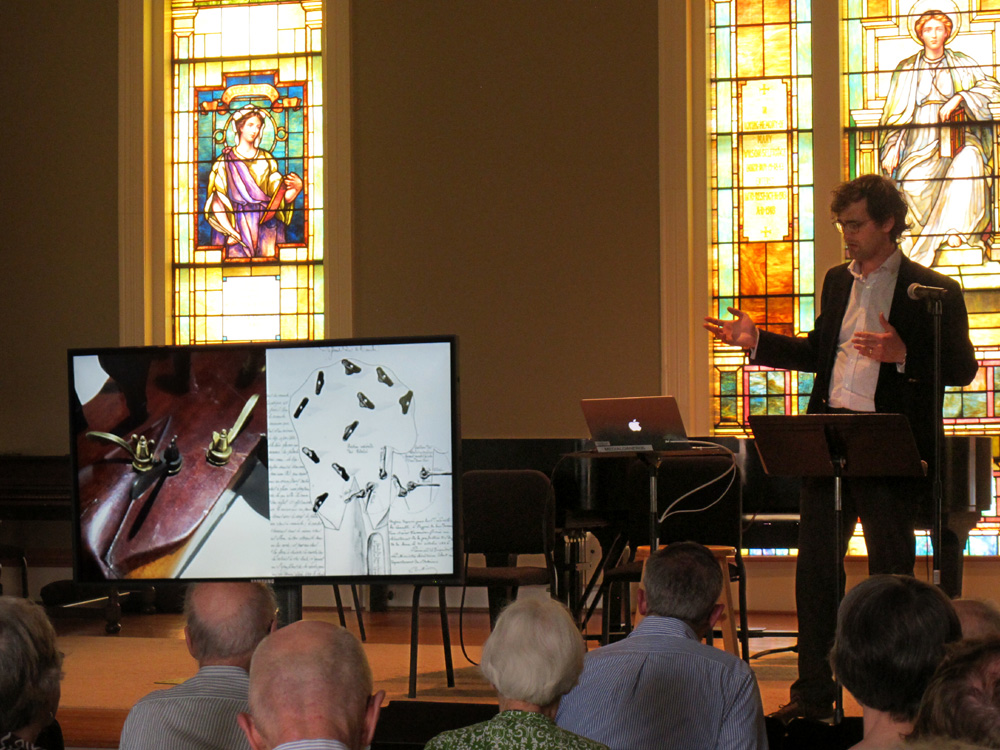
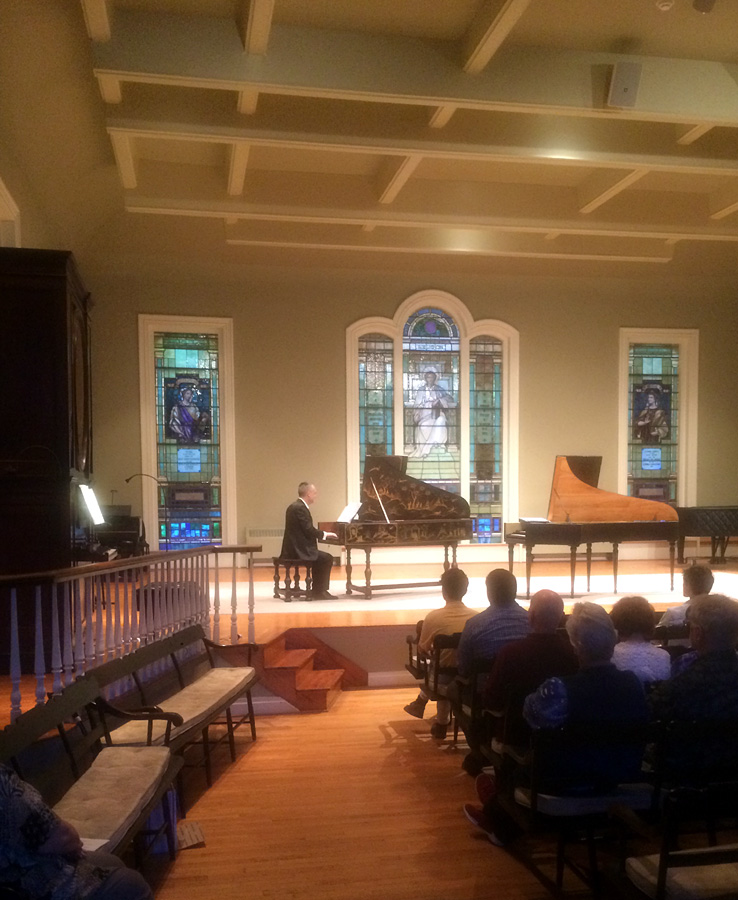
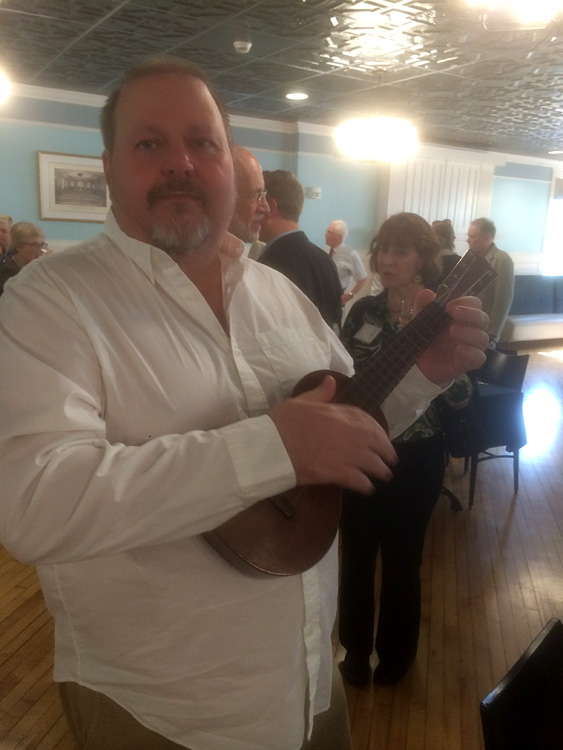
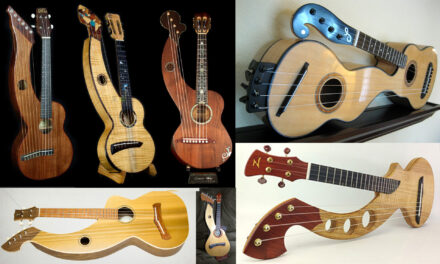
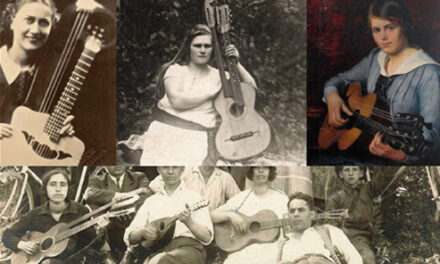
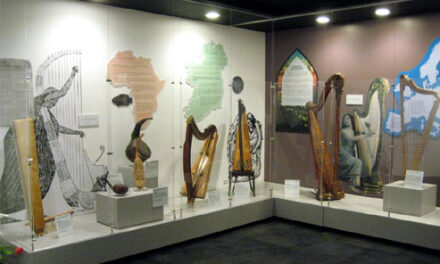
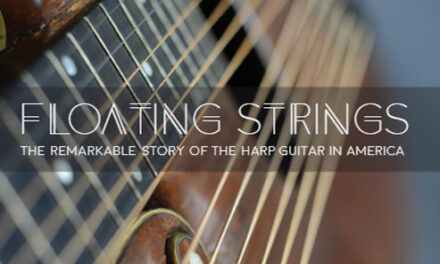
Once again, I am surprised by what my youngest son can accomplish so admirably, skillfully and easily, in a filled weekend. I helped mom figure how to enlarge the pictures and then get back to the script. We enjoyed the family photos also. Great to see you in the short time we had together. Love, Dad
Best report on the meeting I’ve read! Thanks!